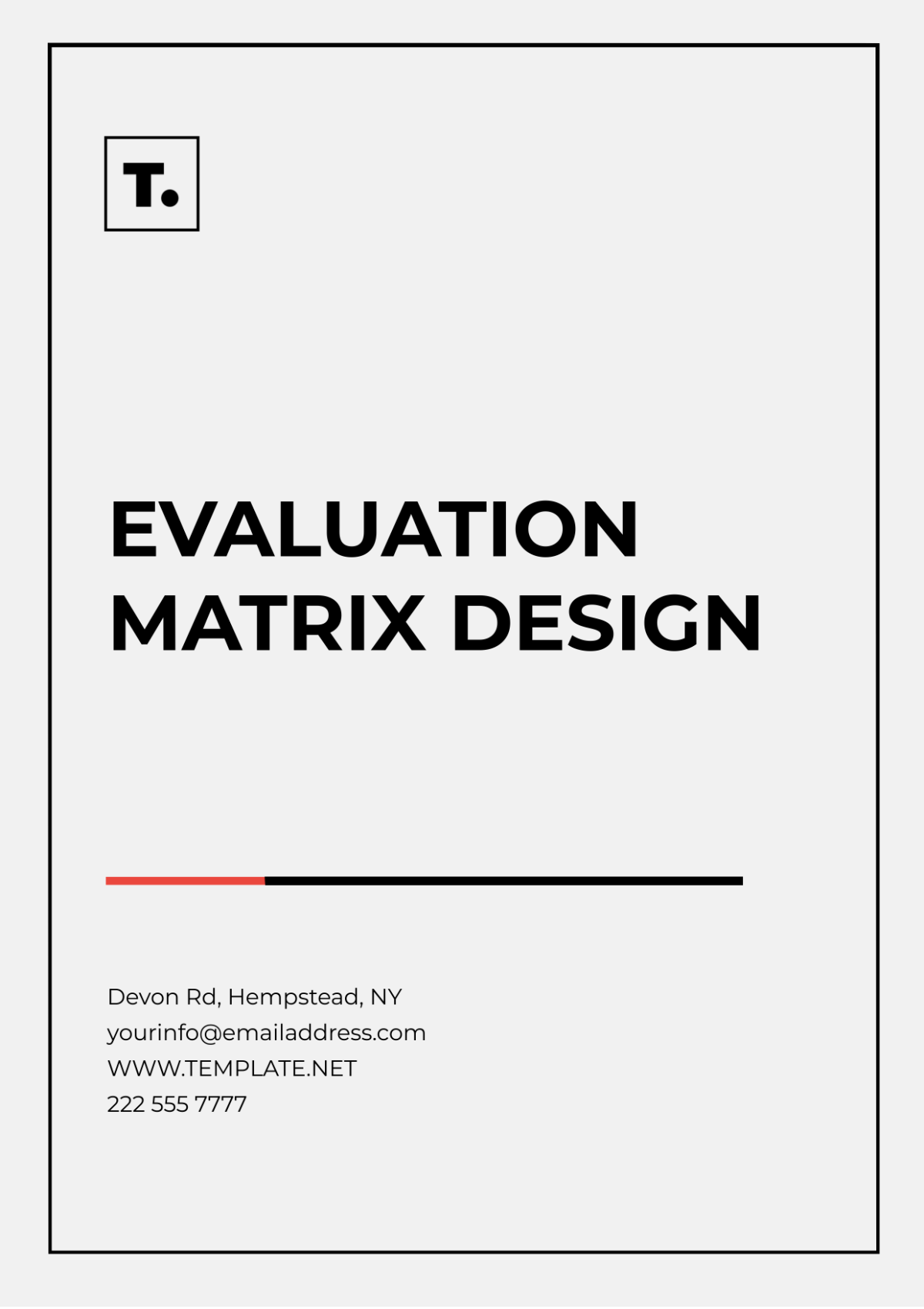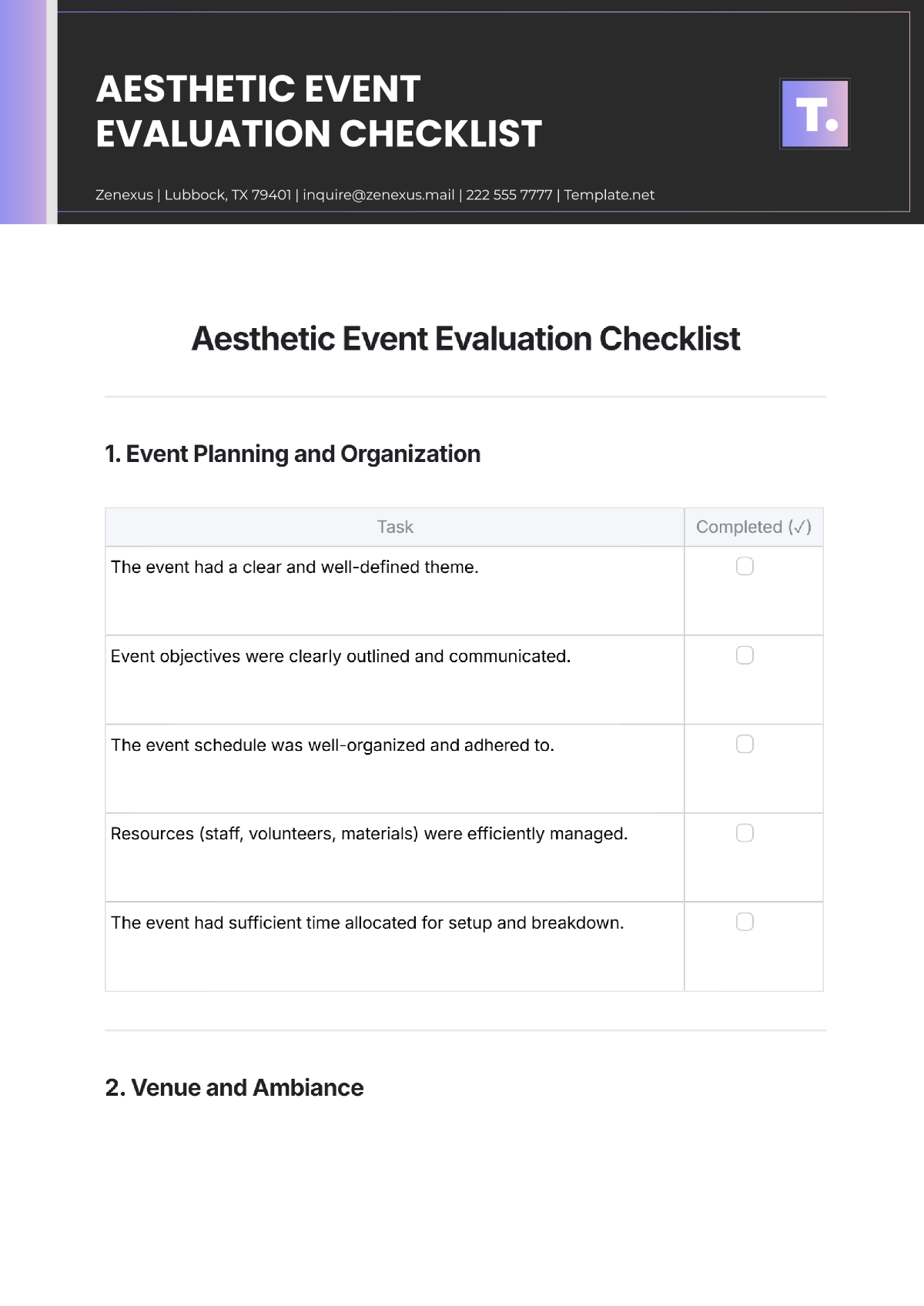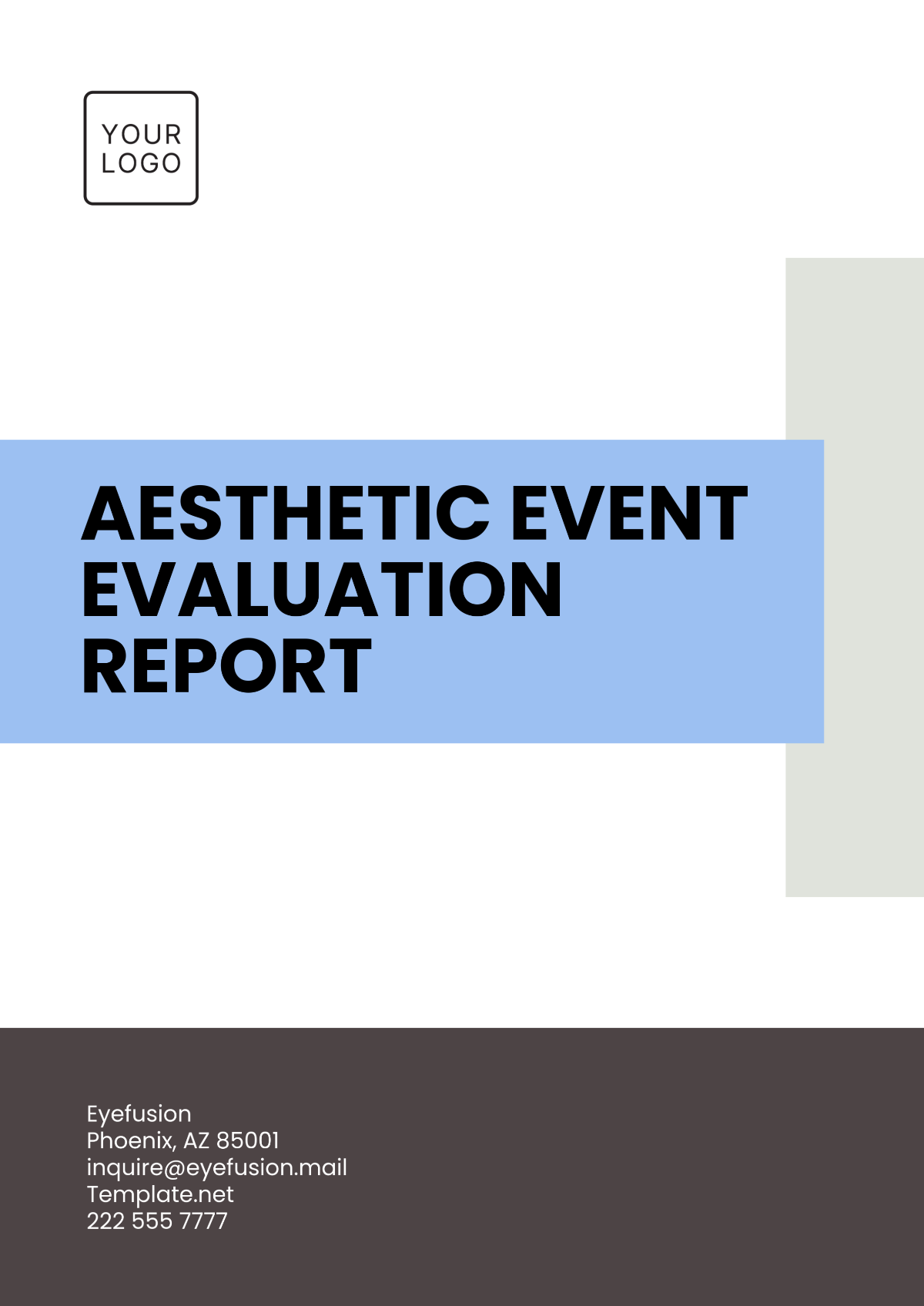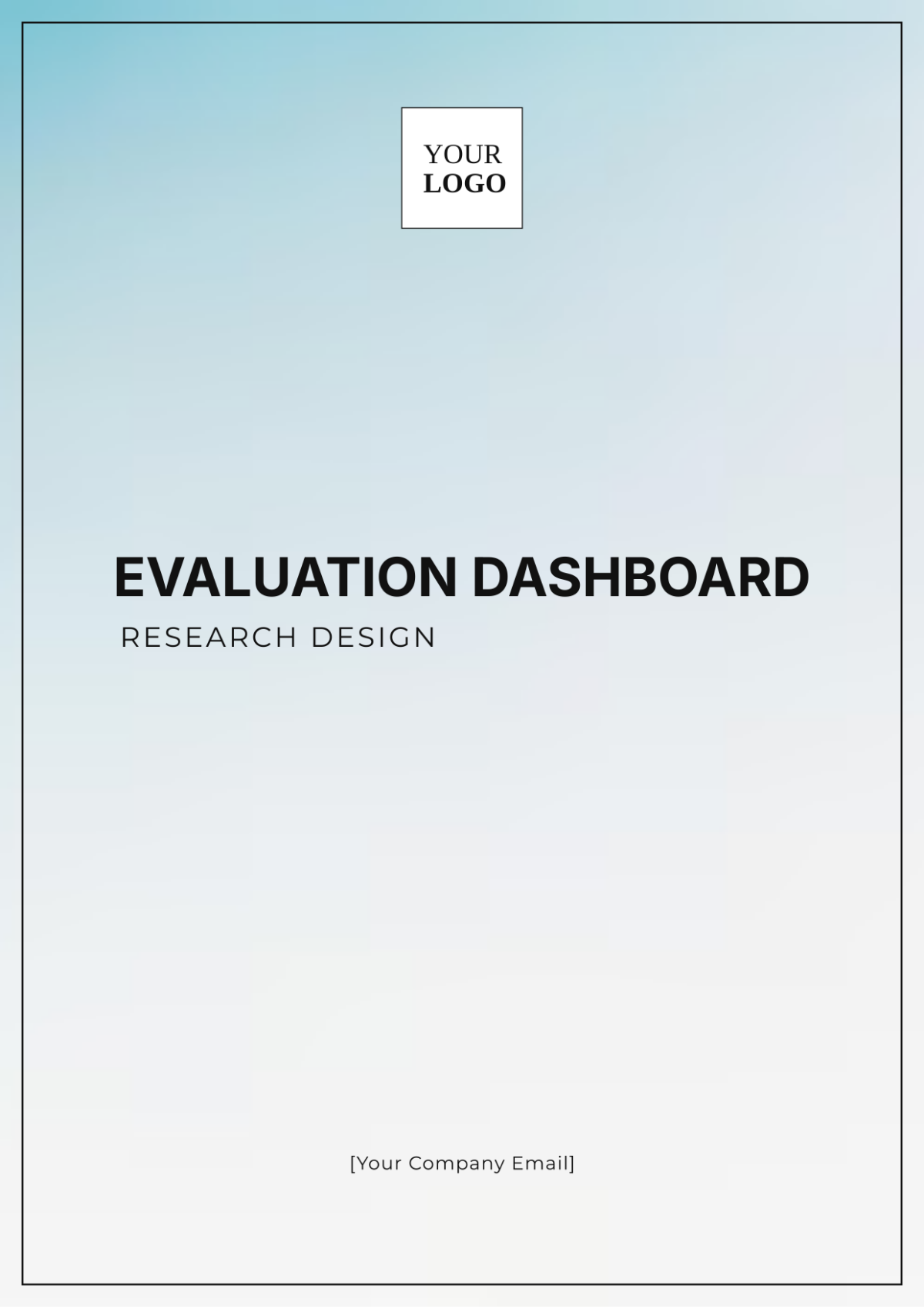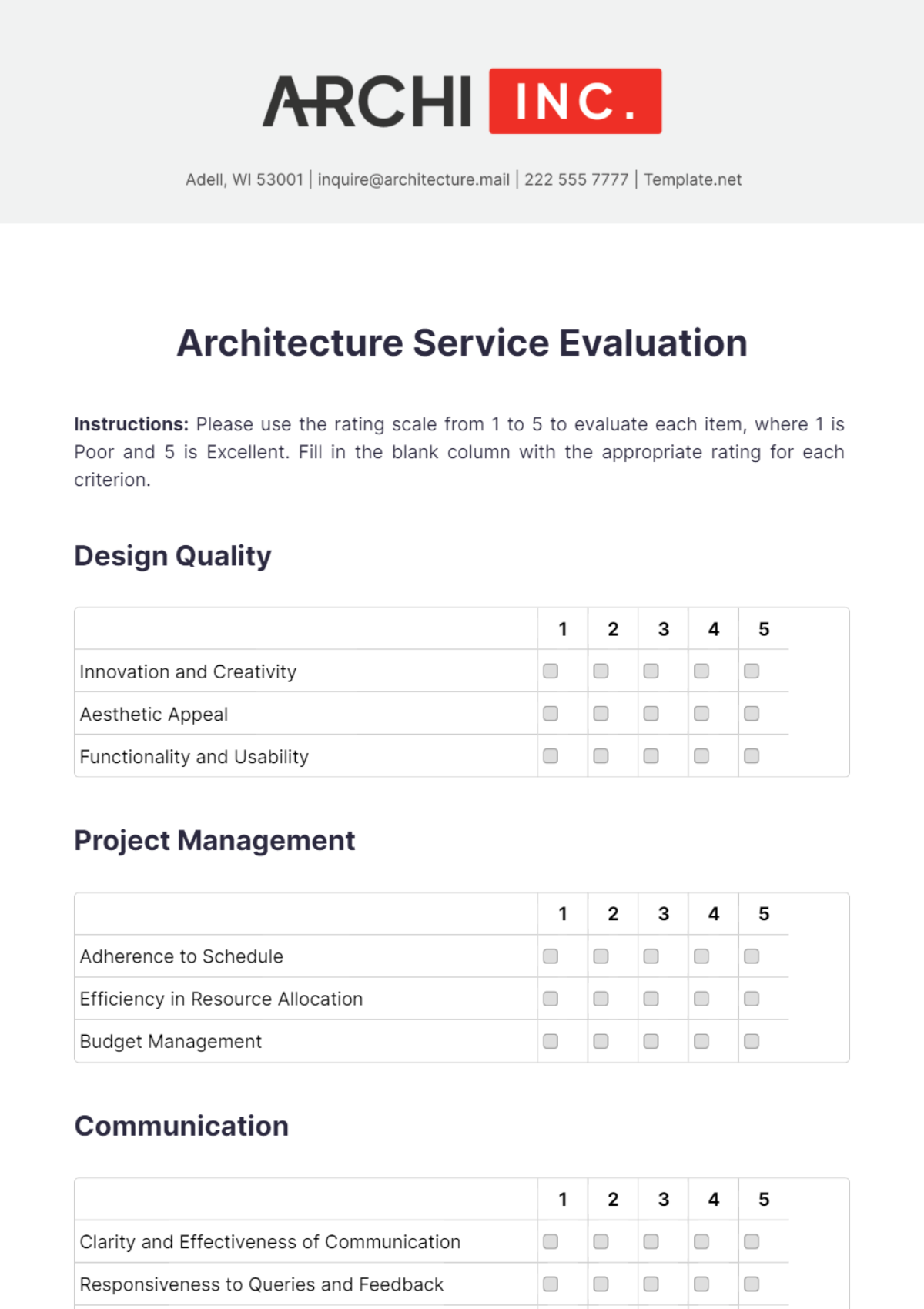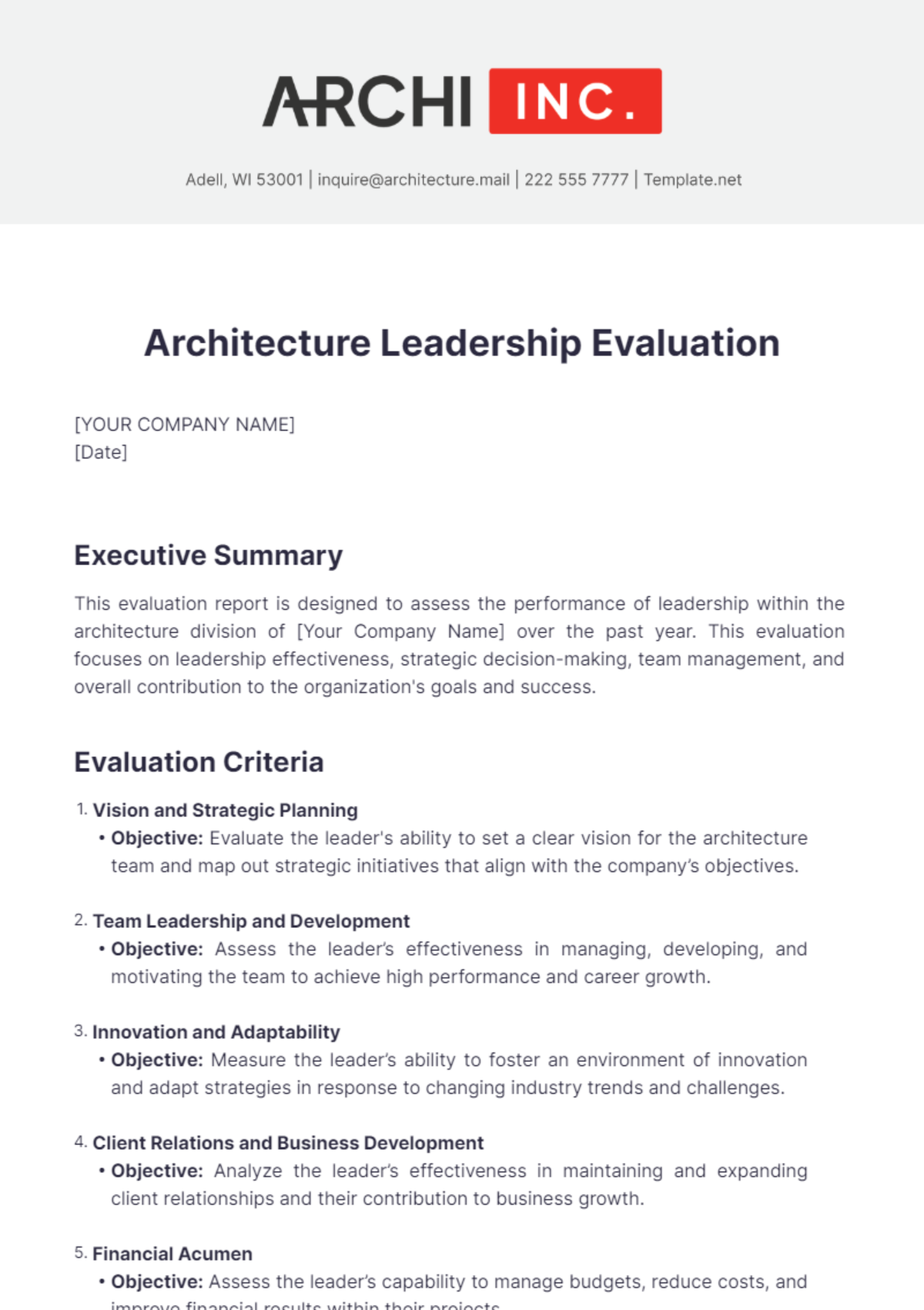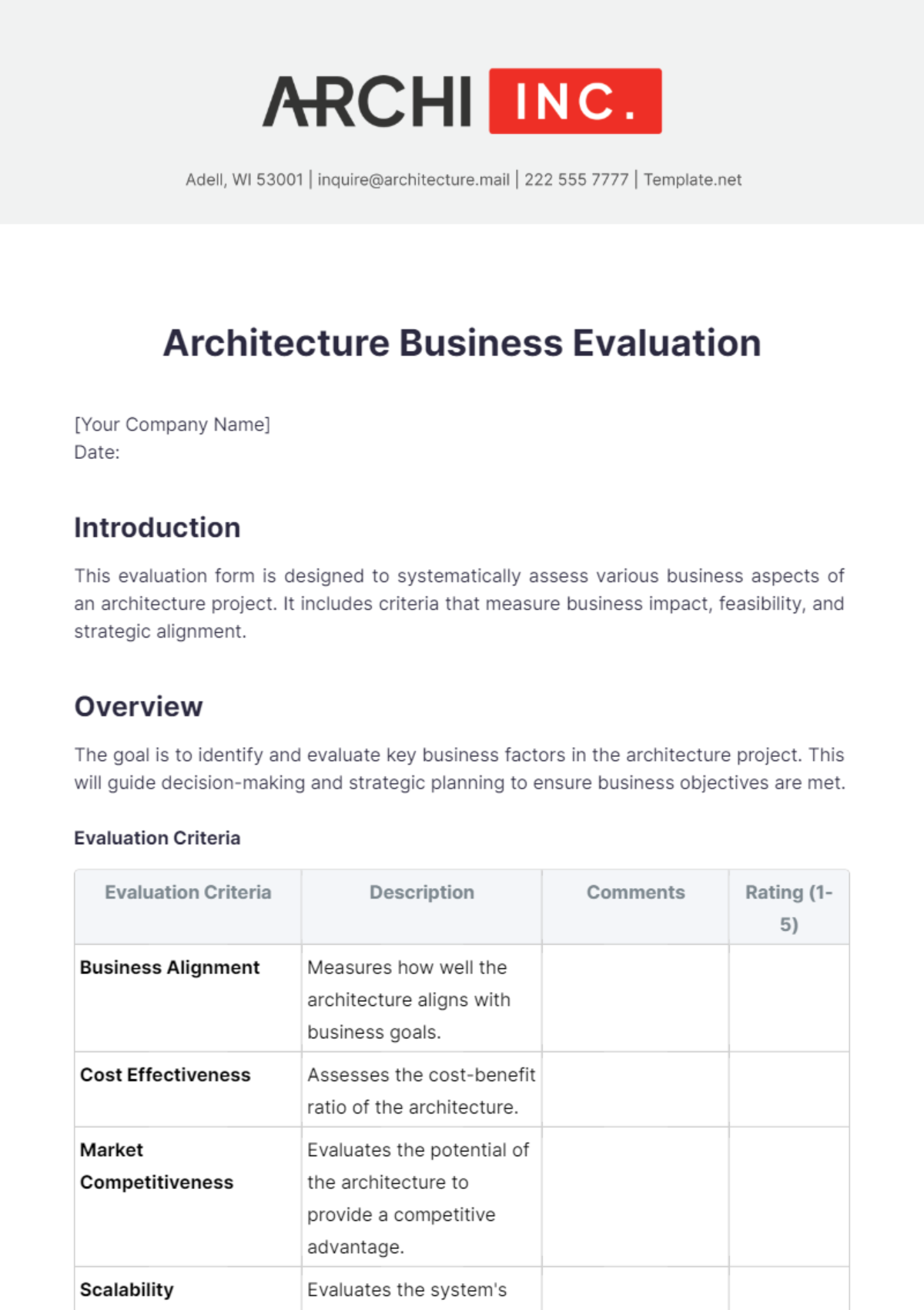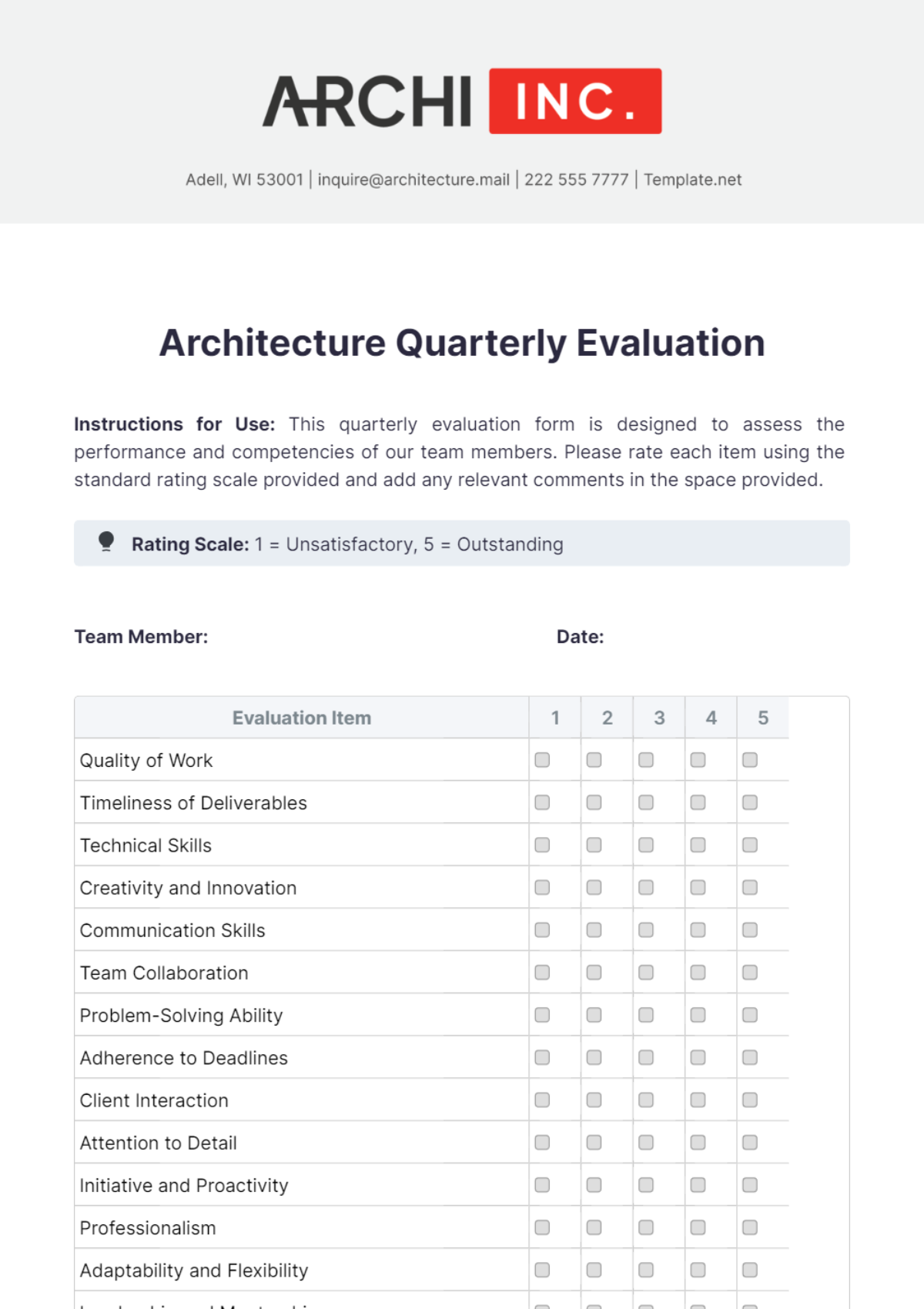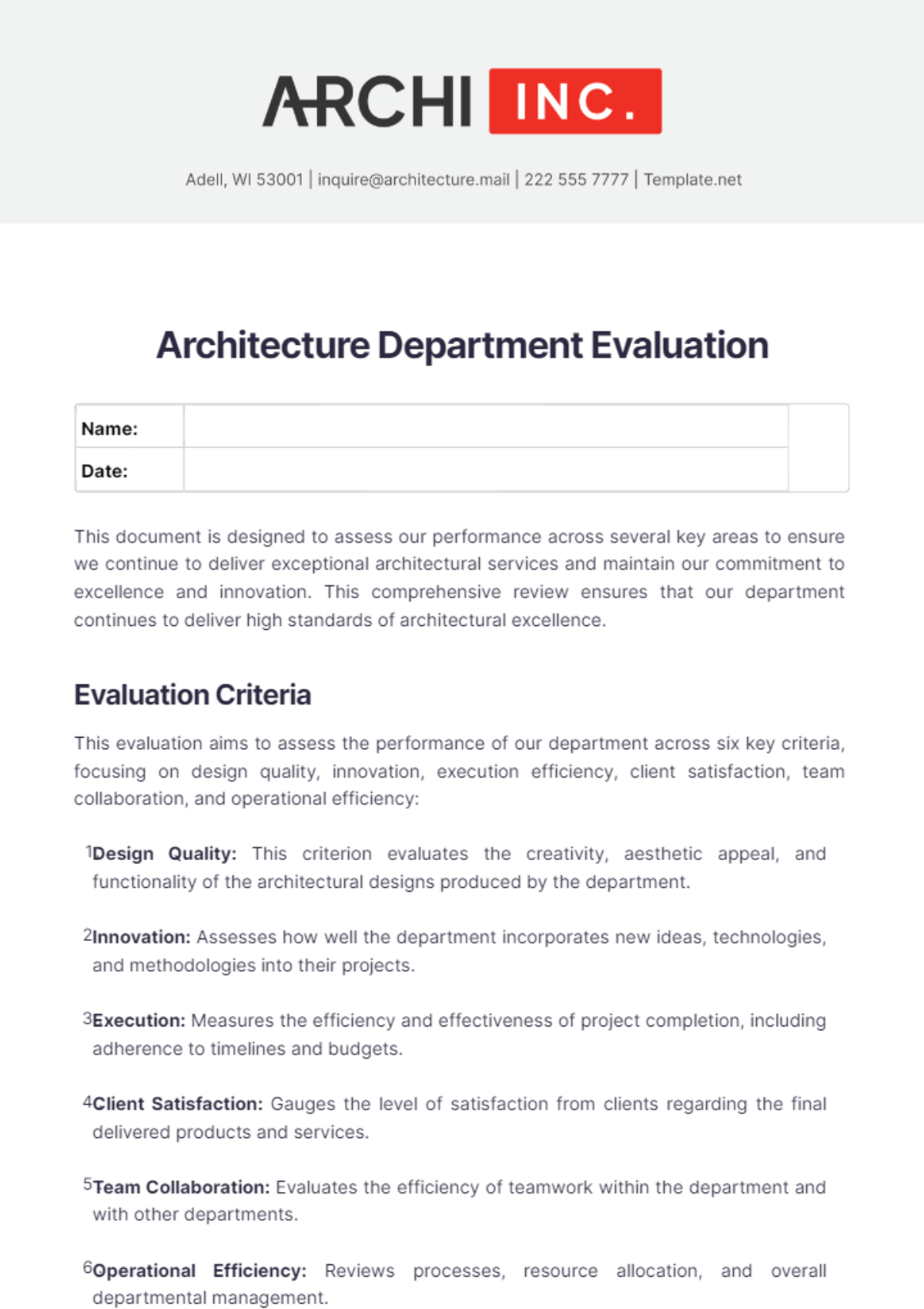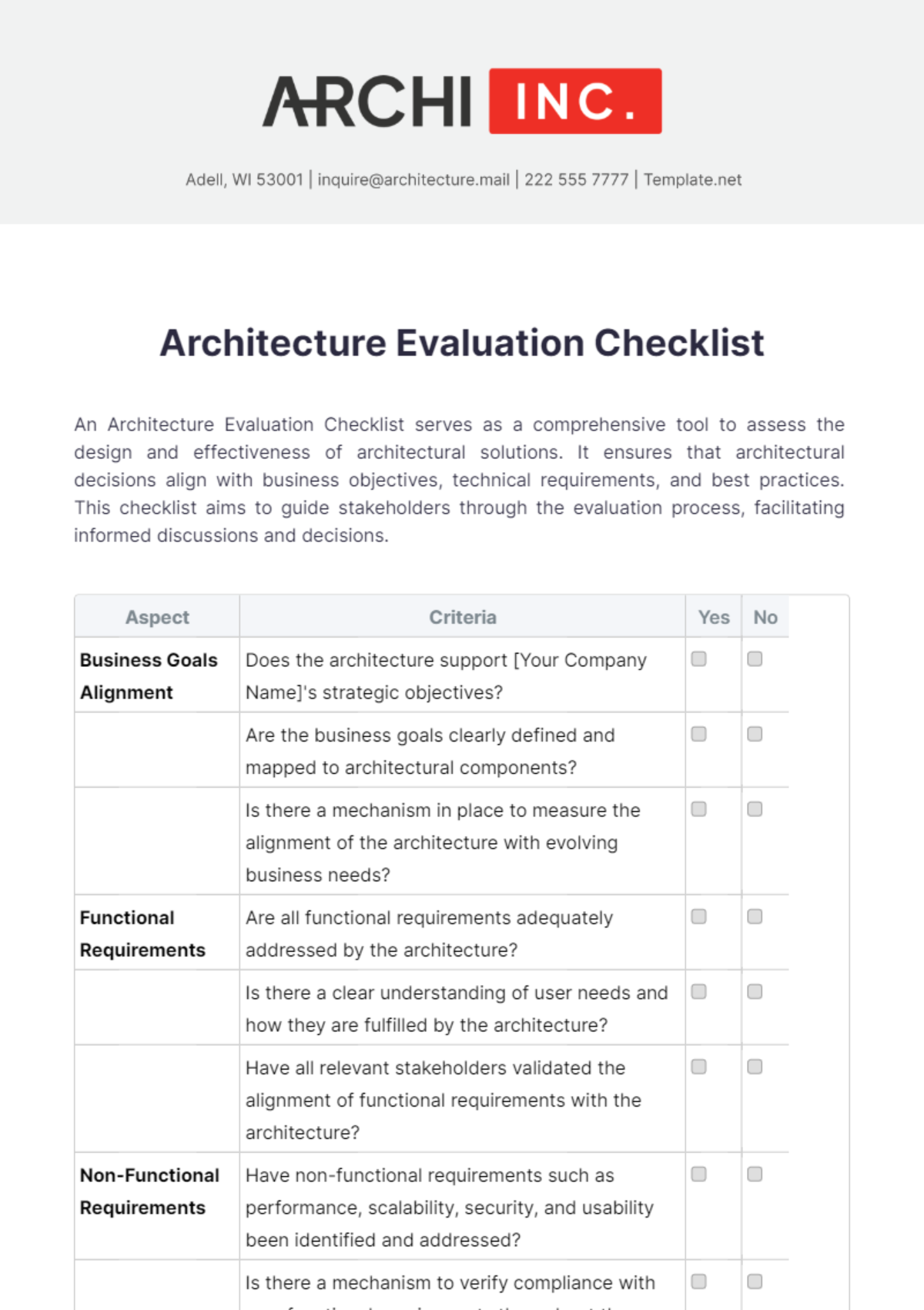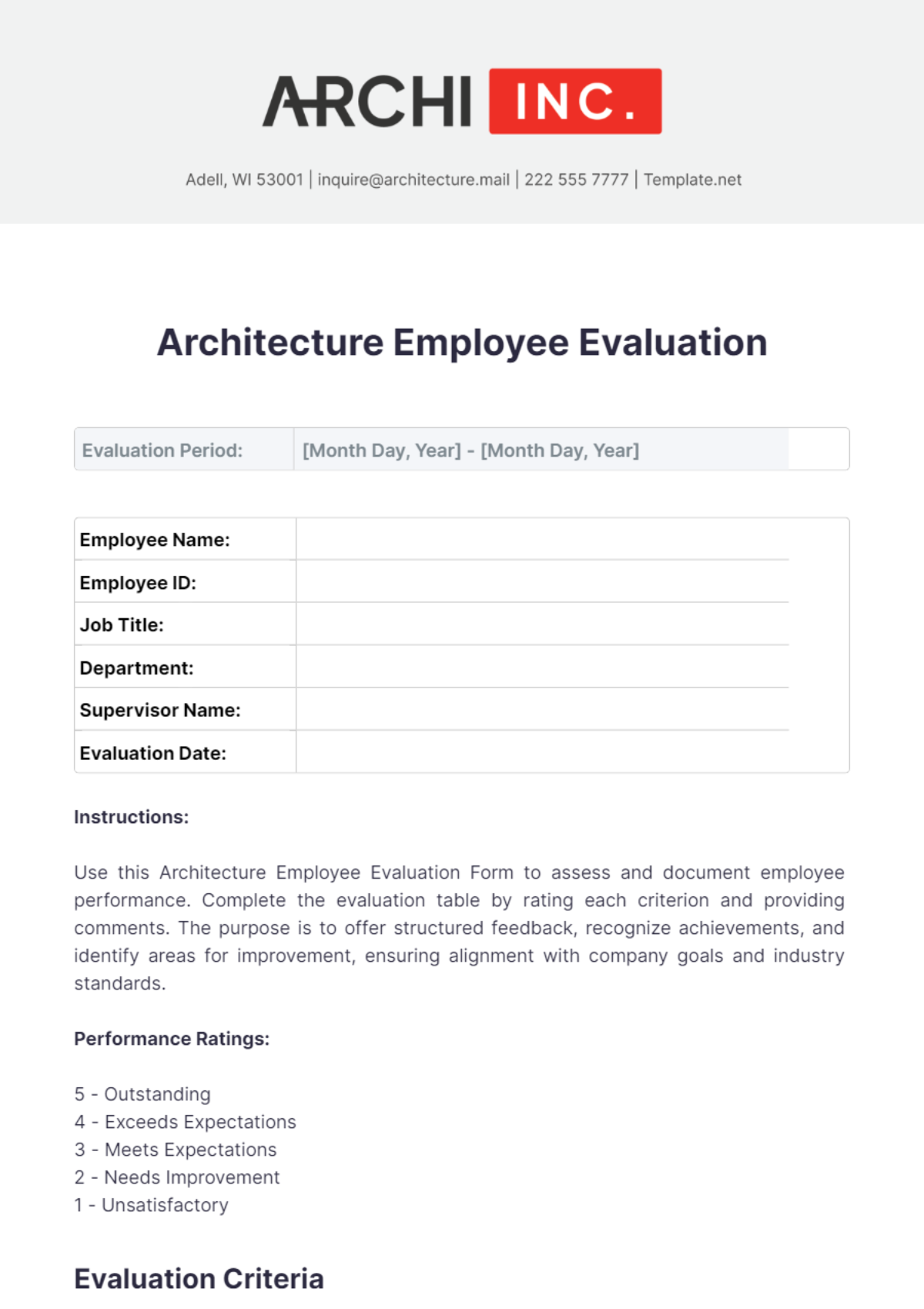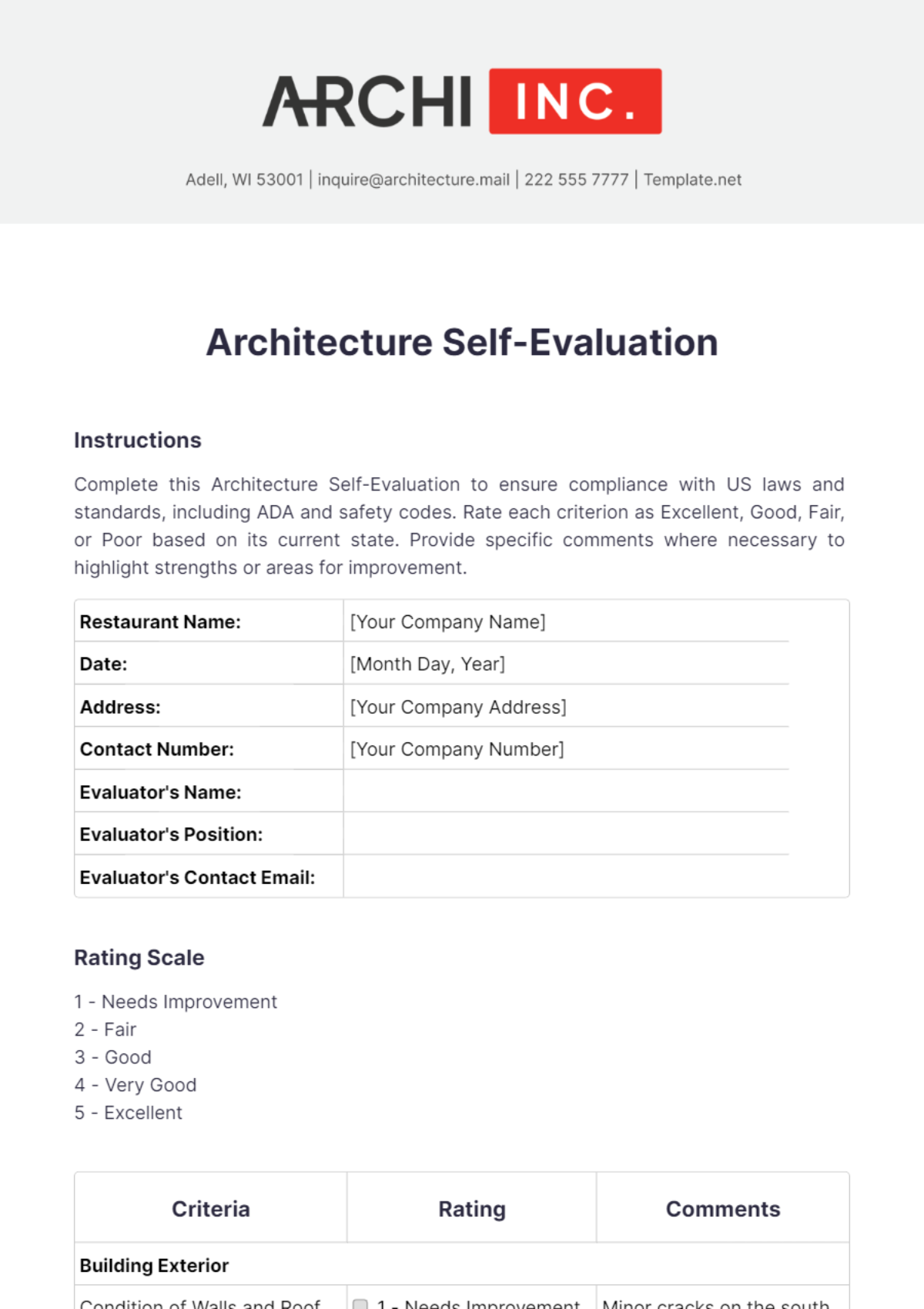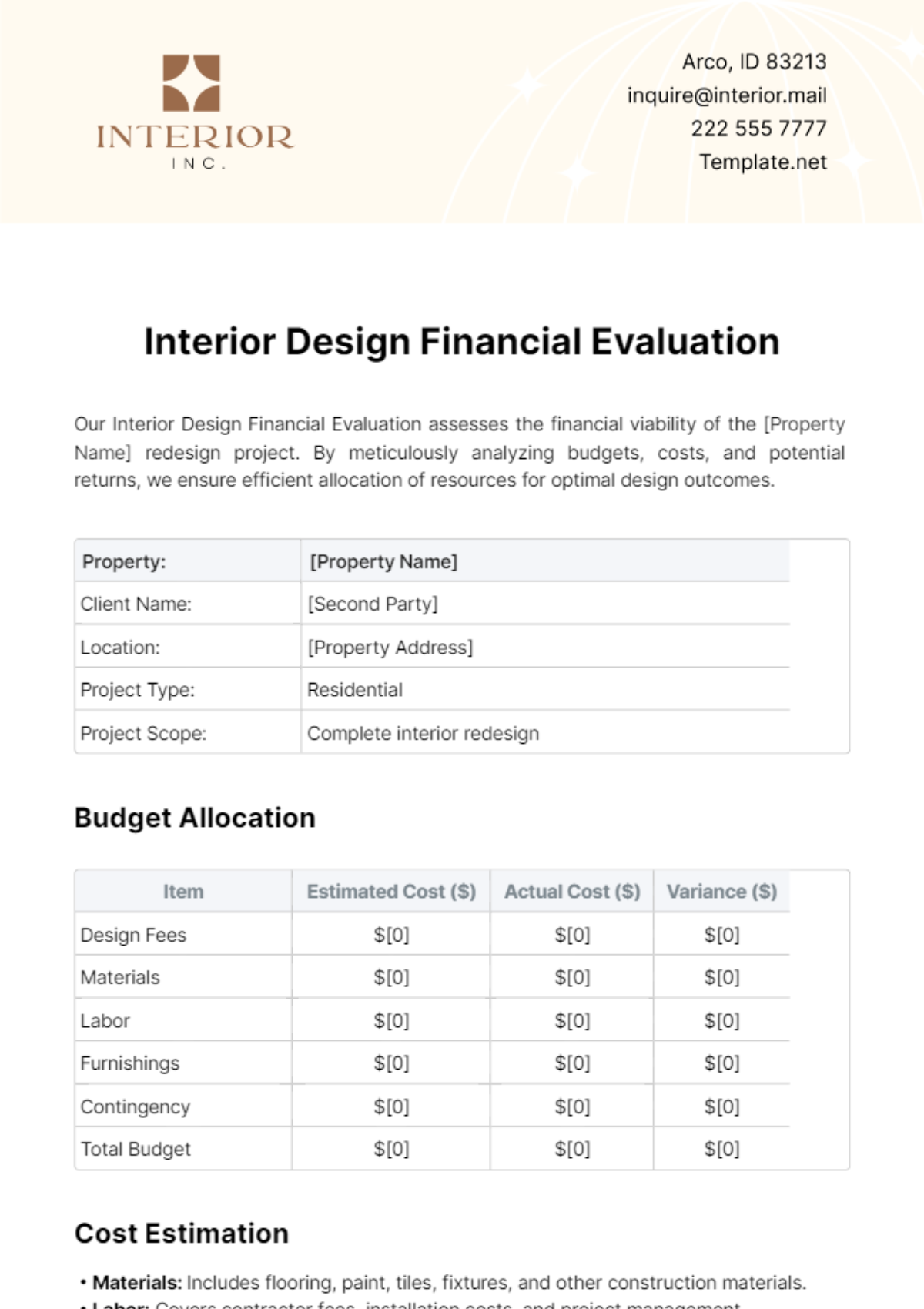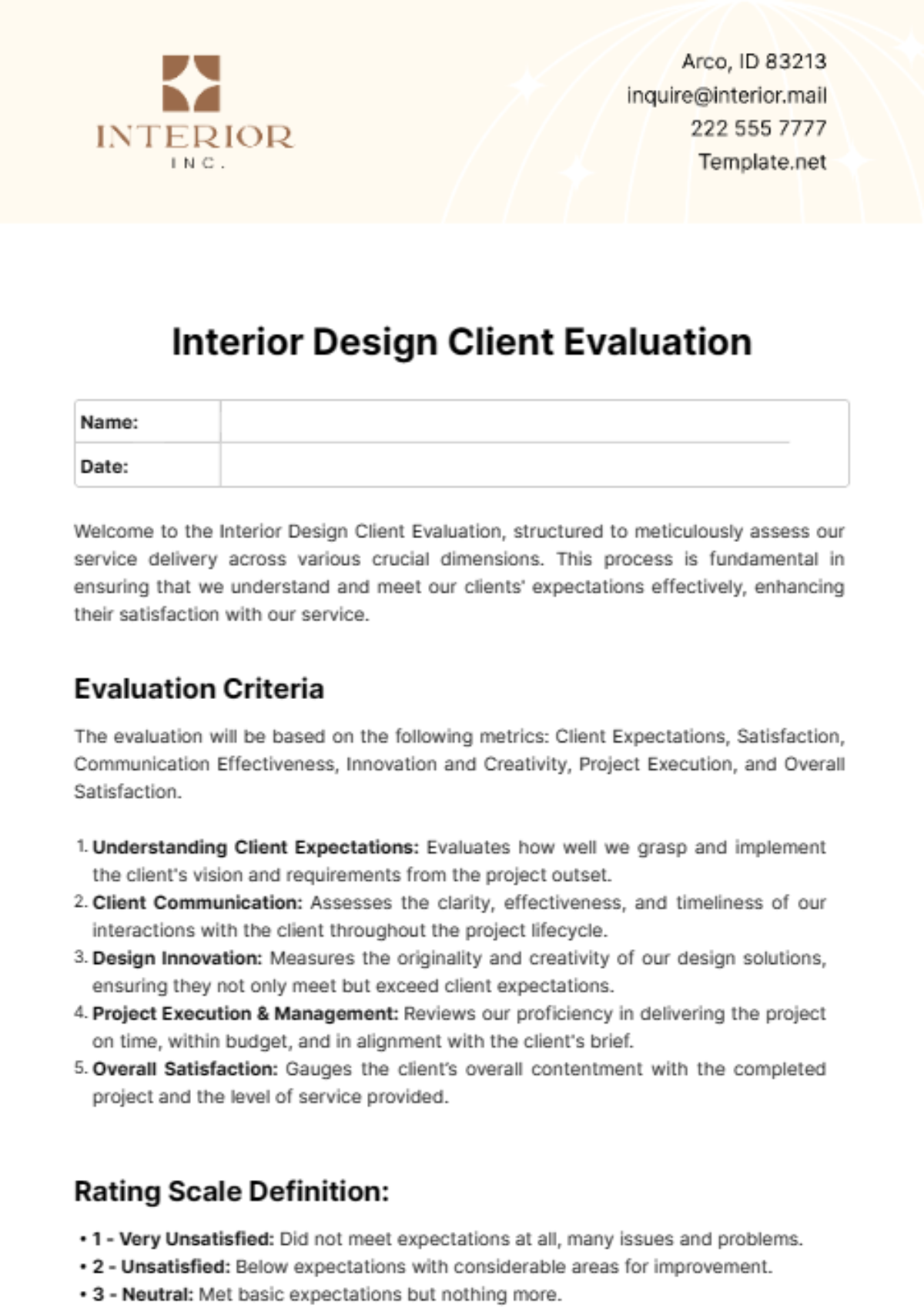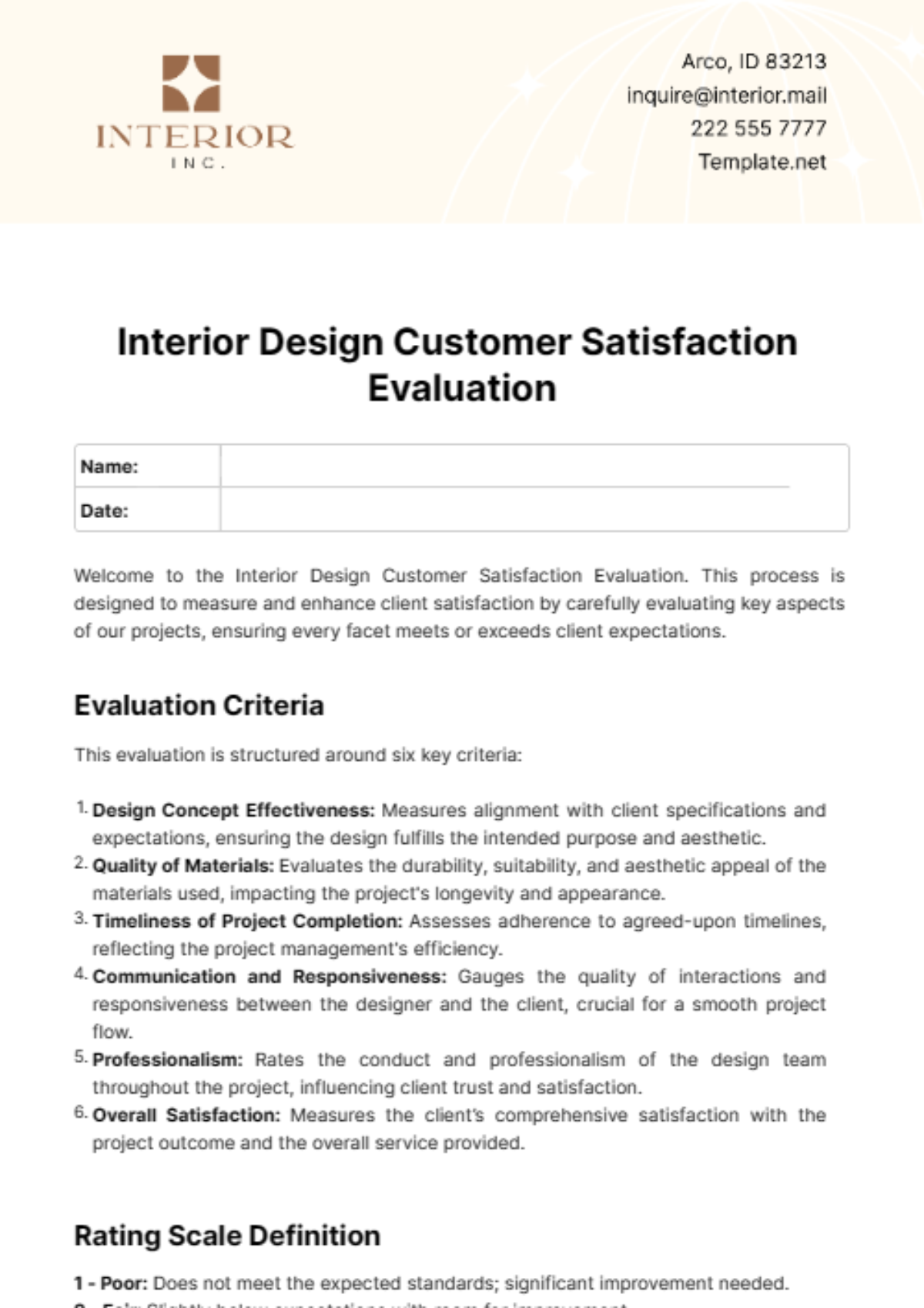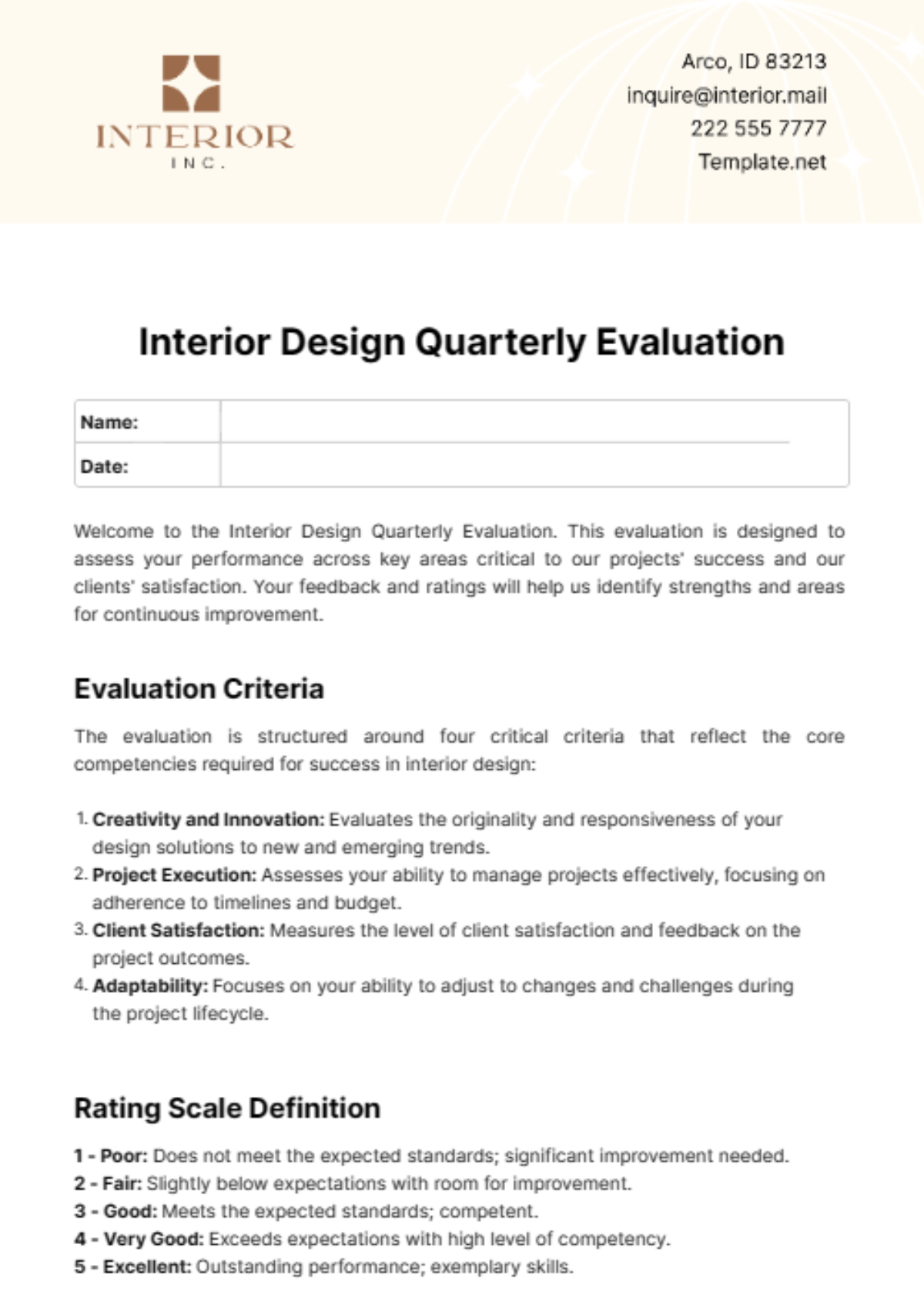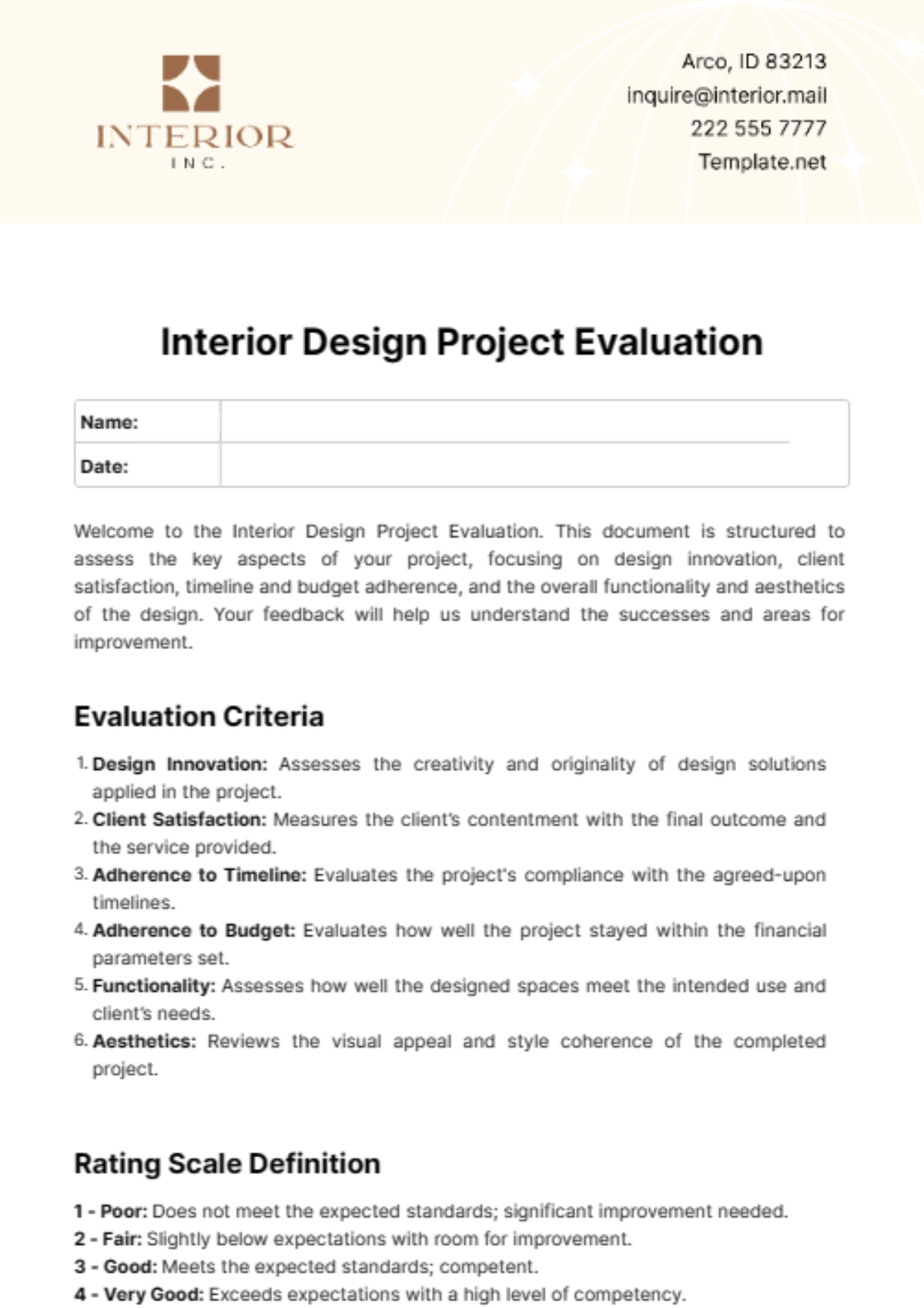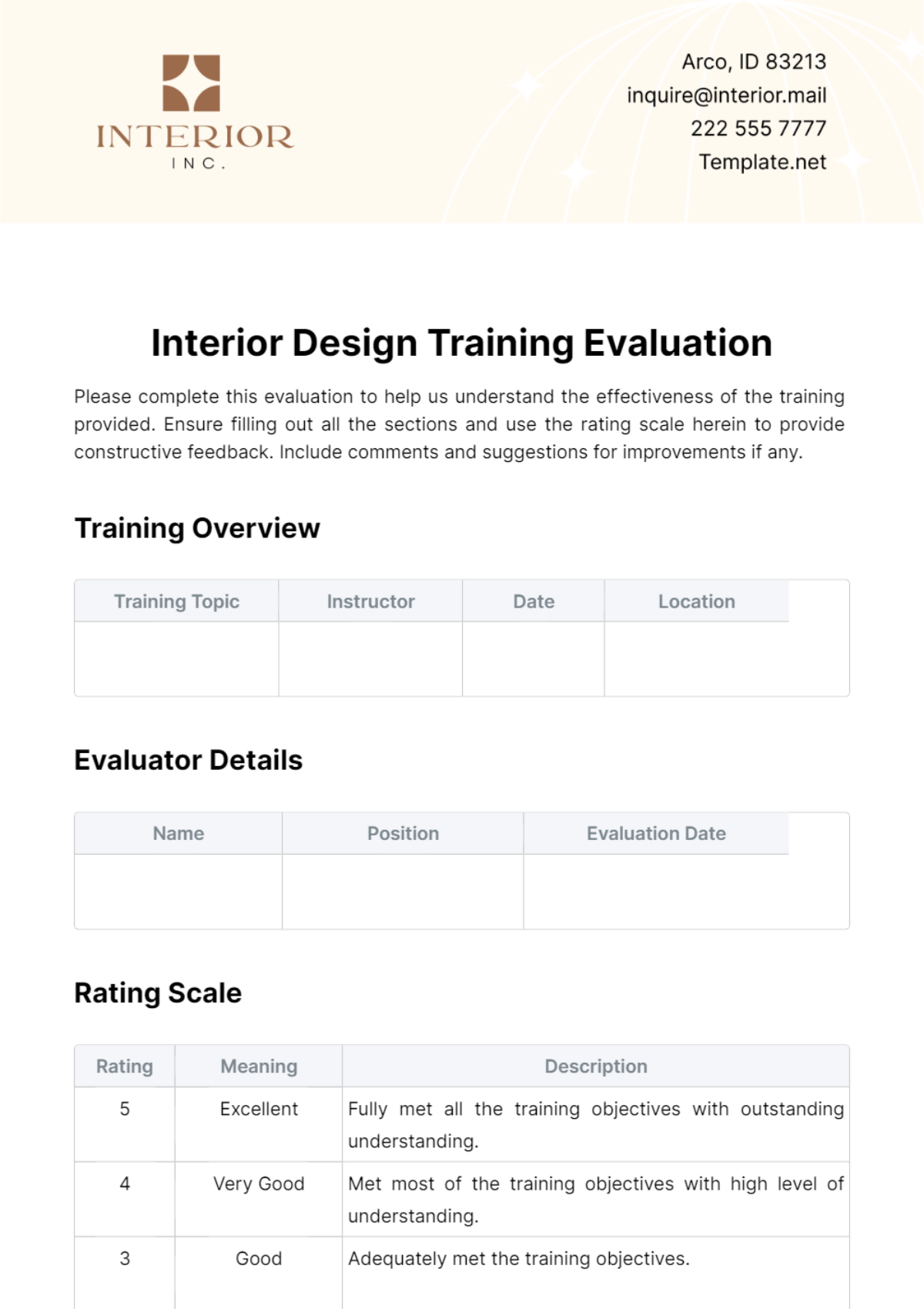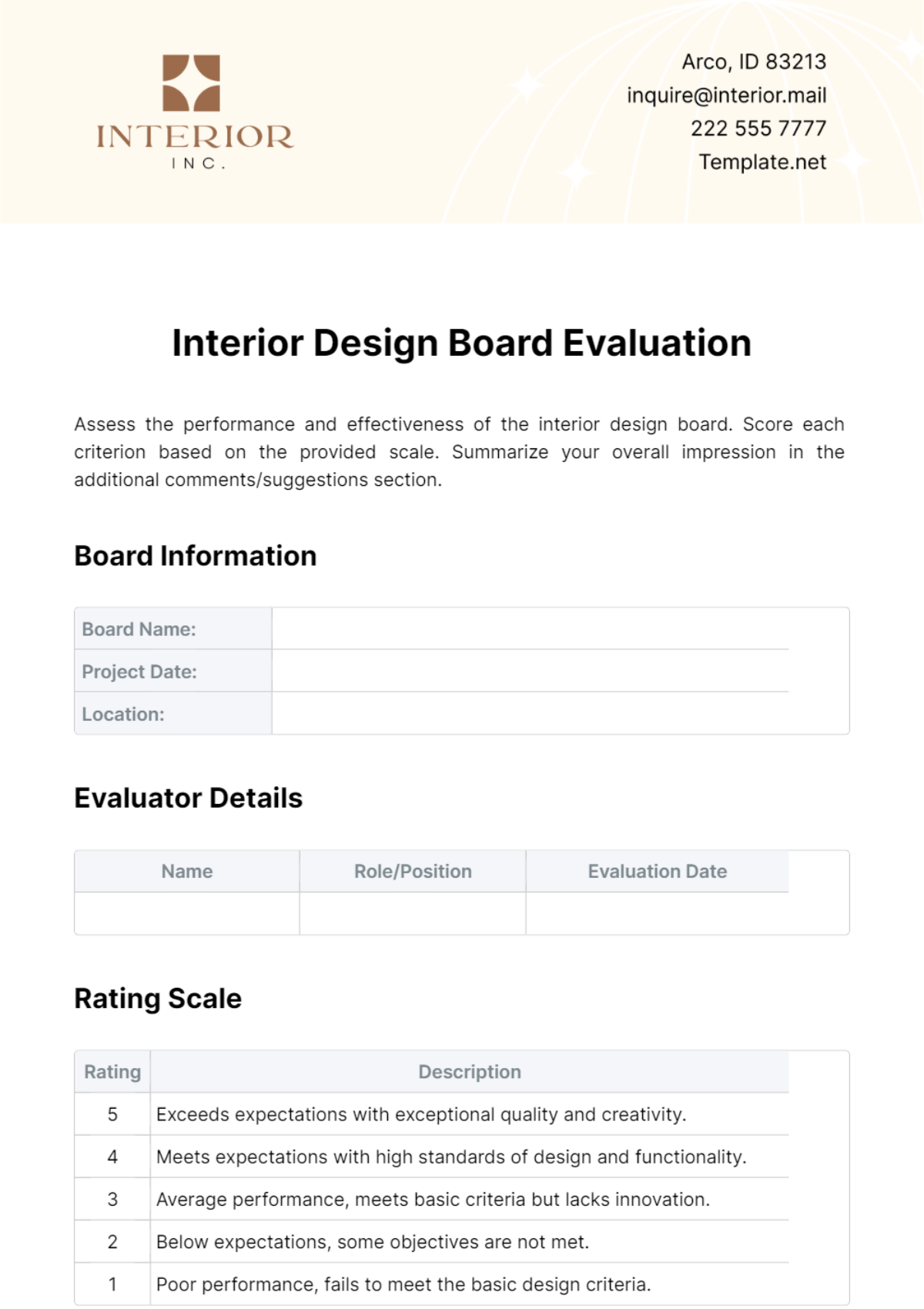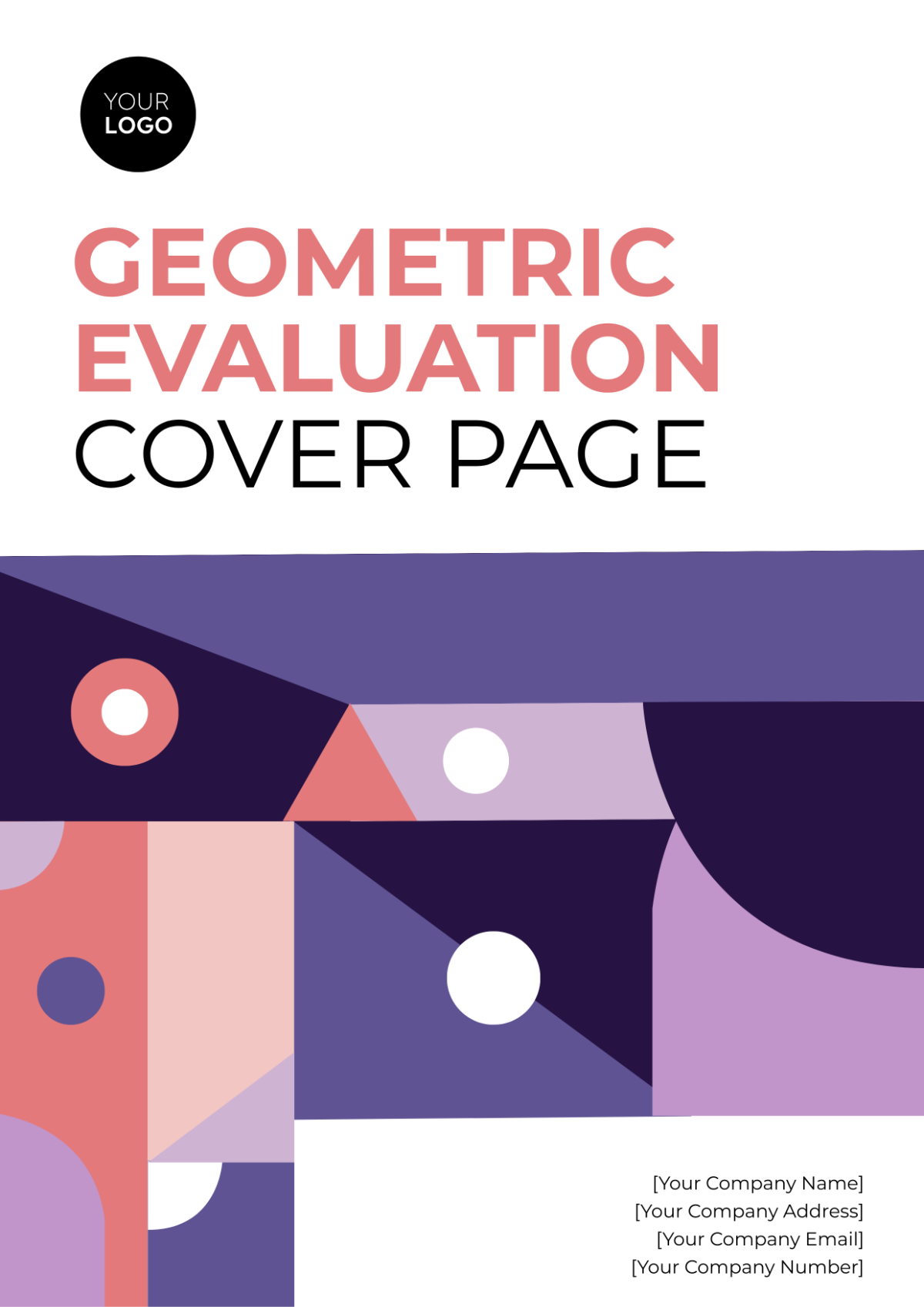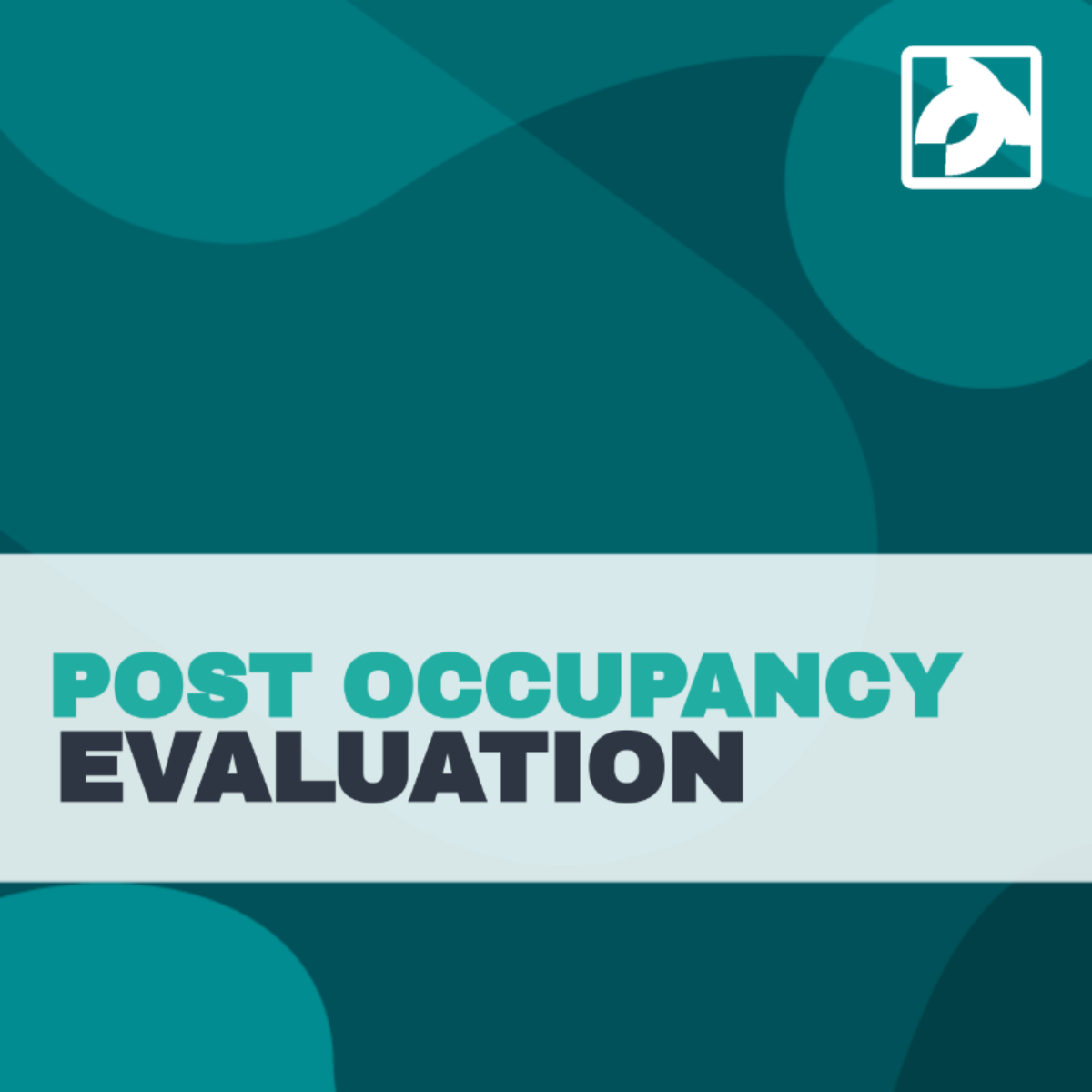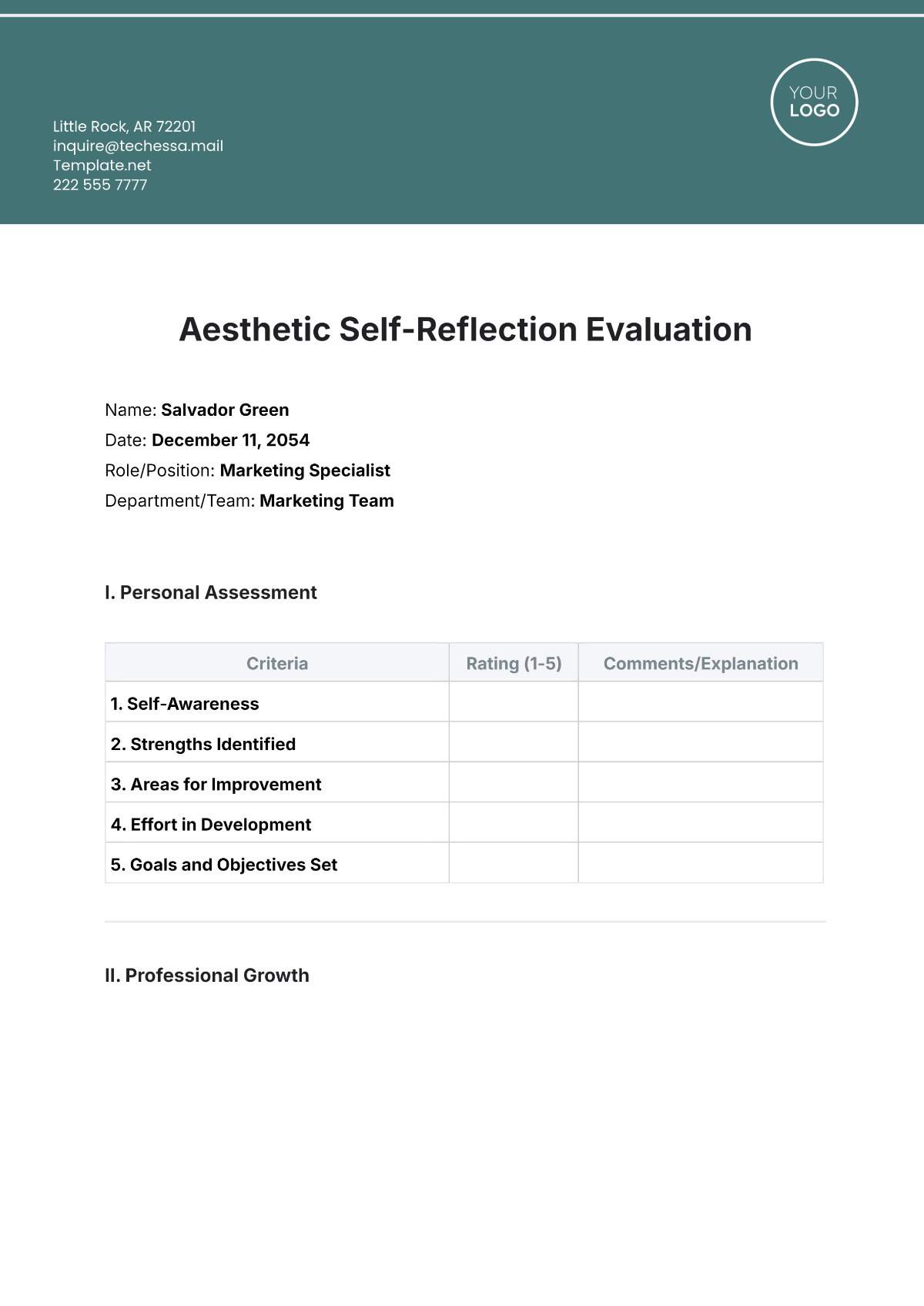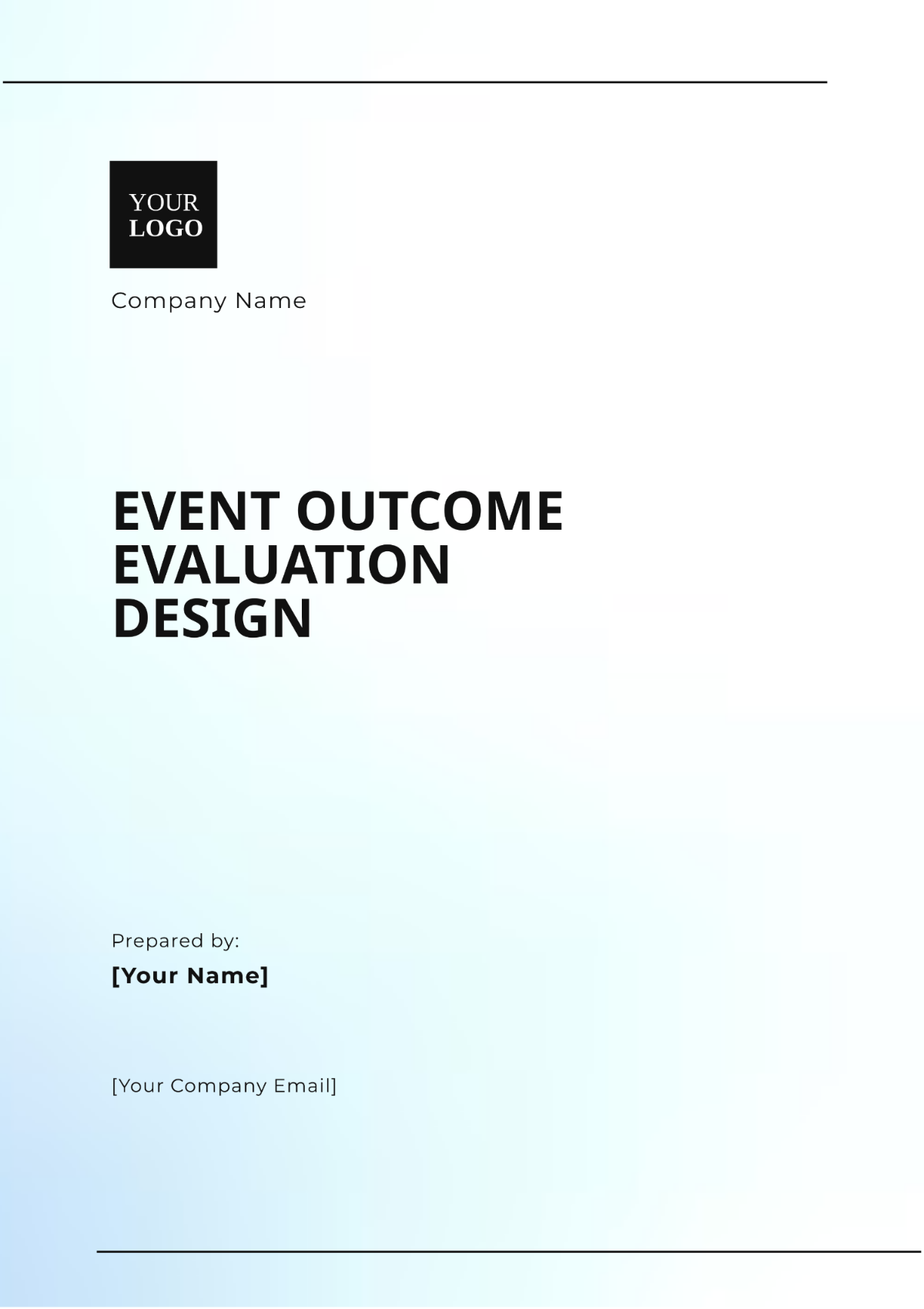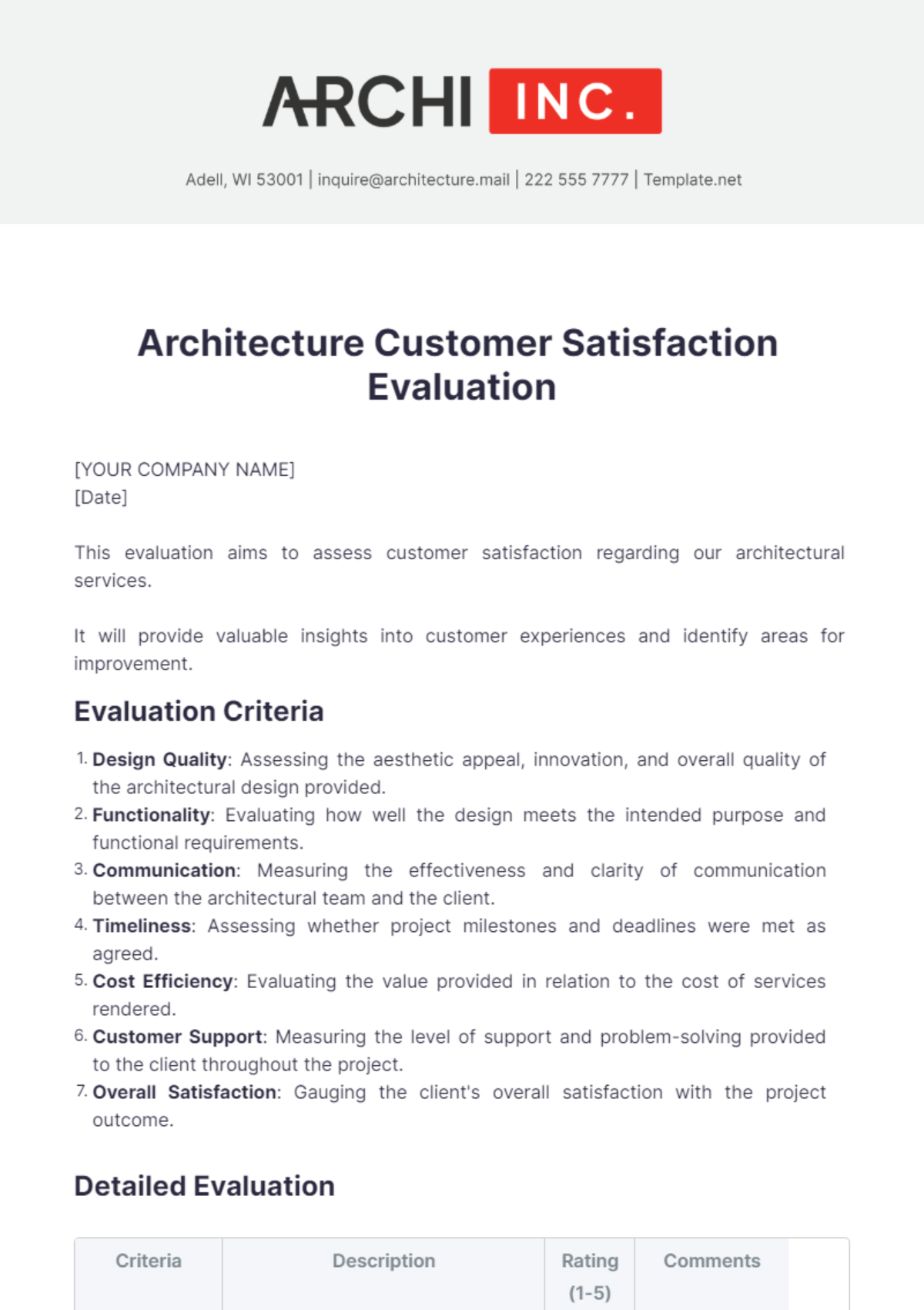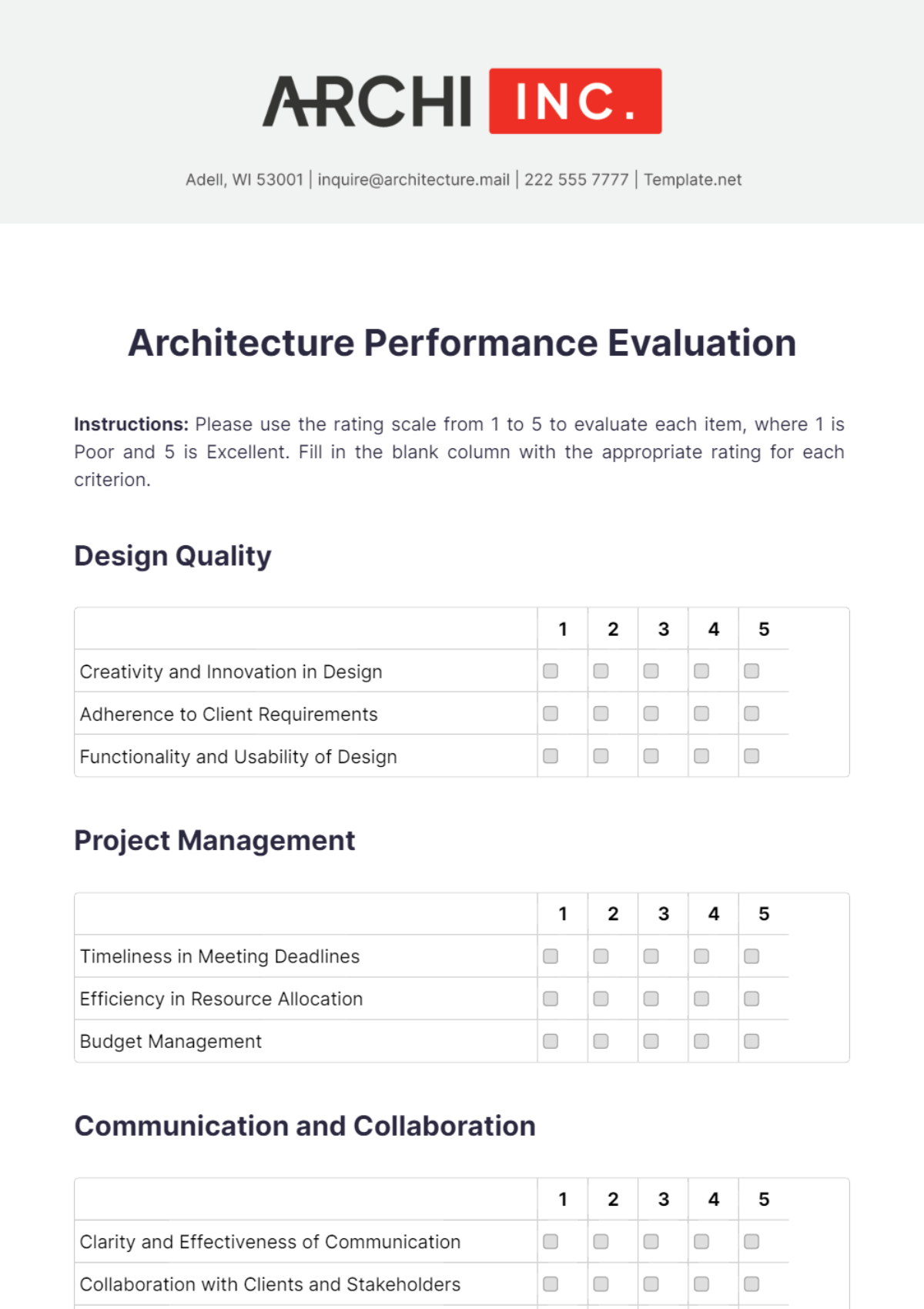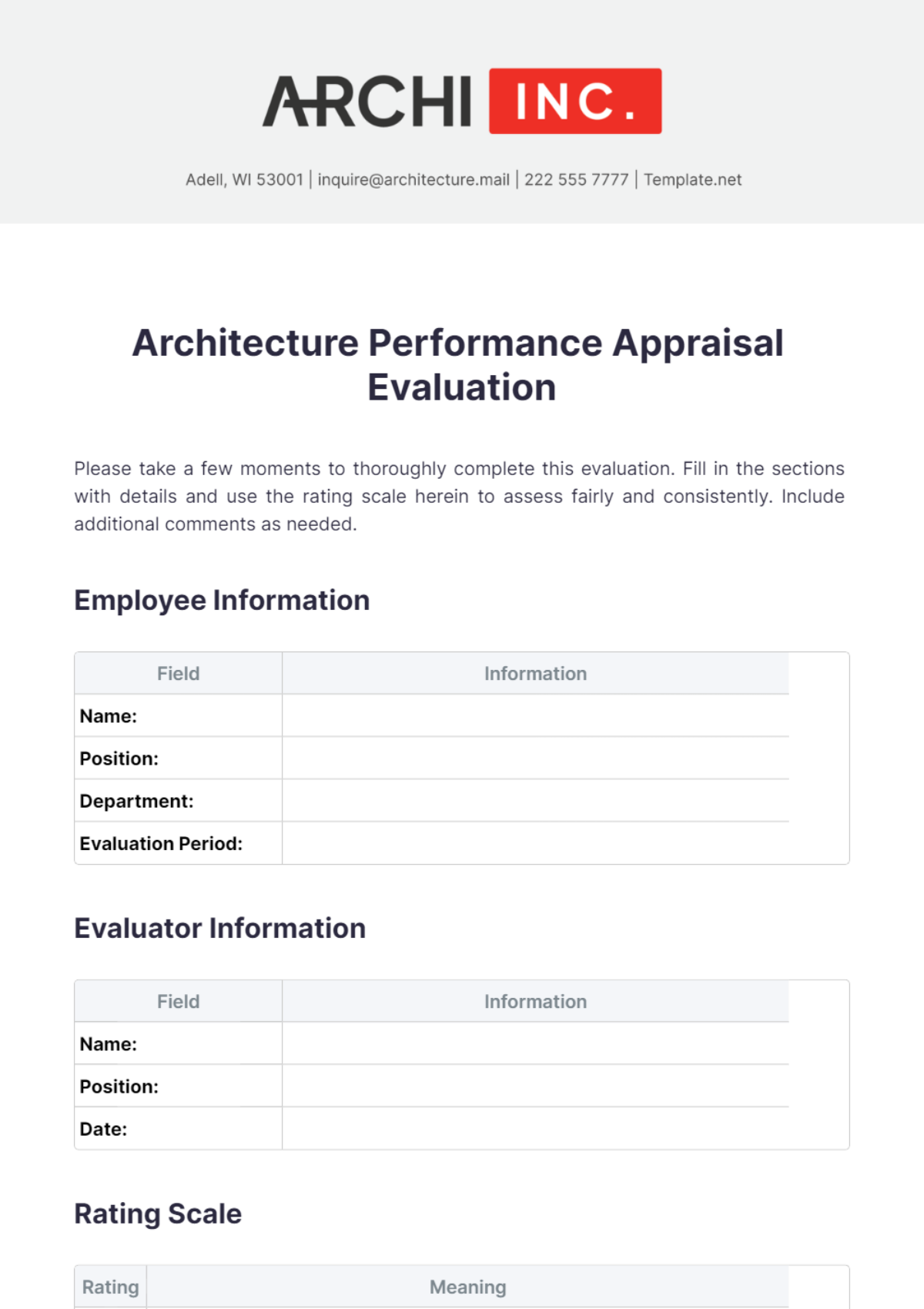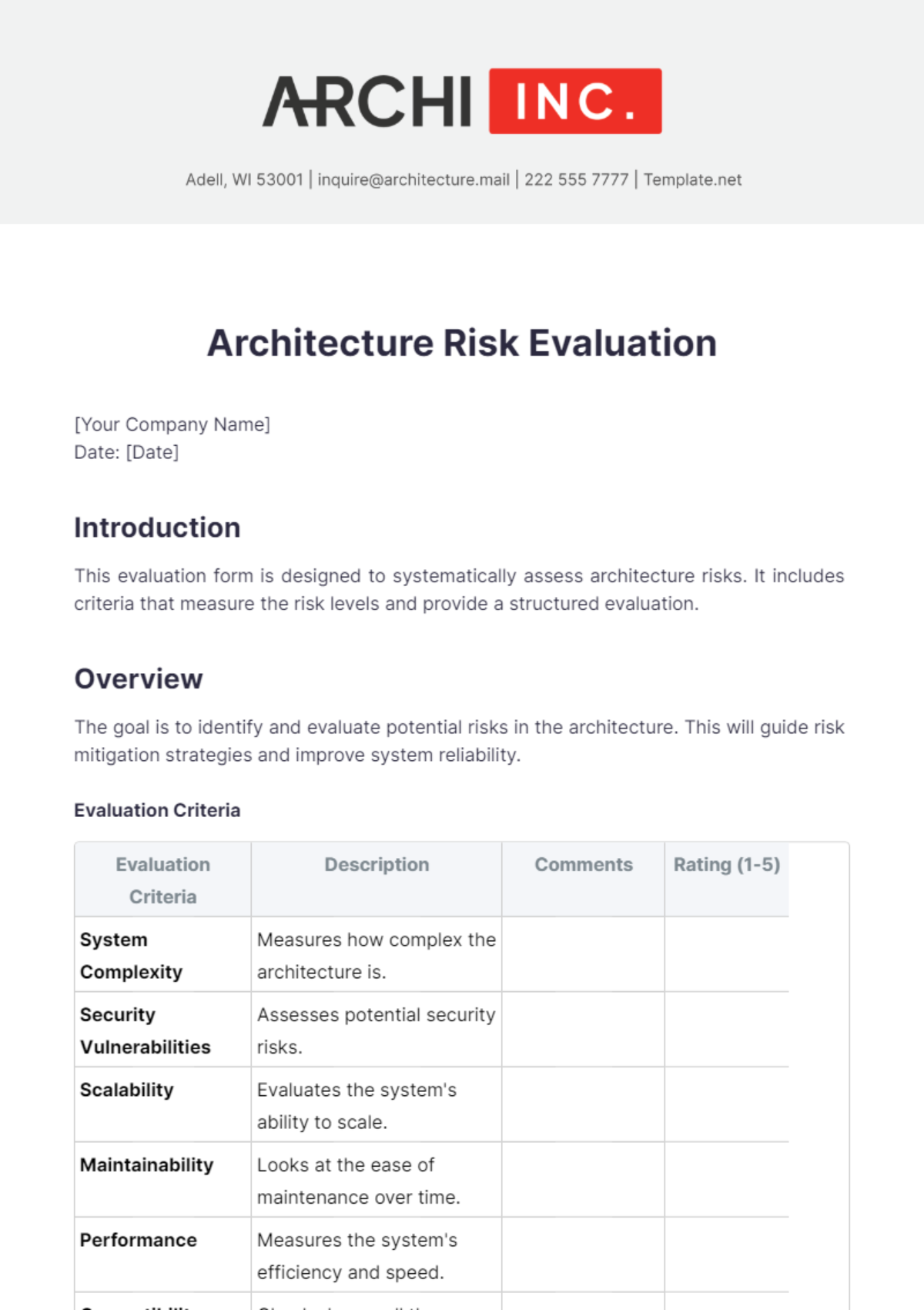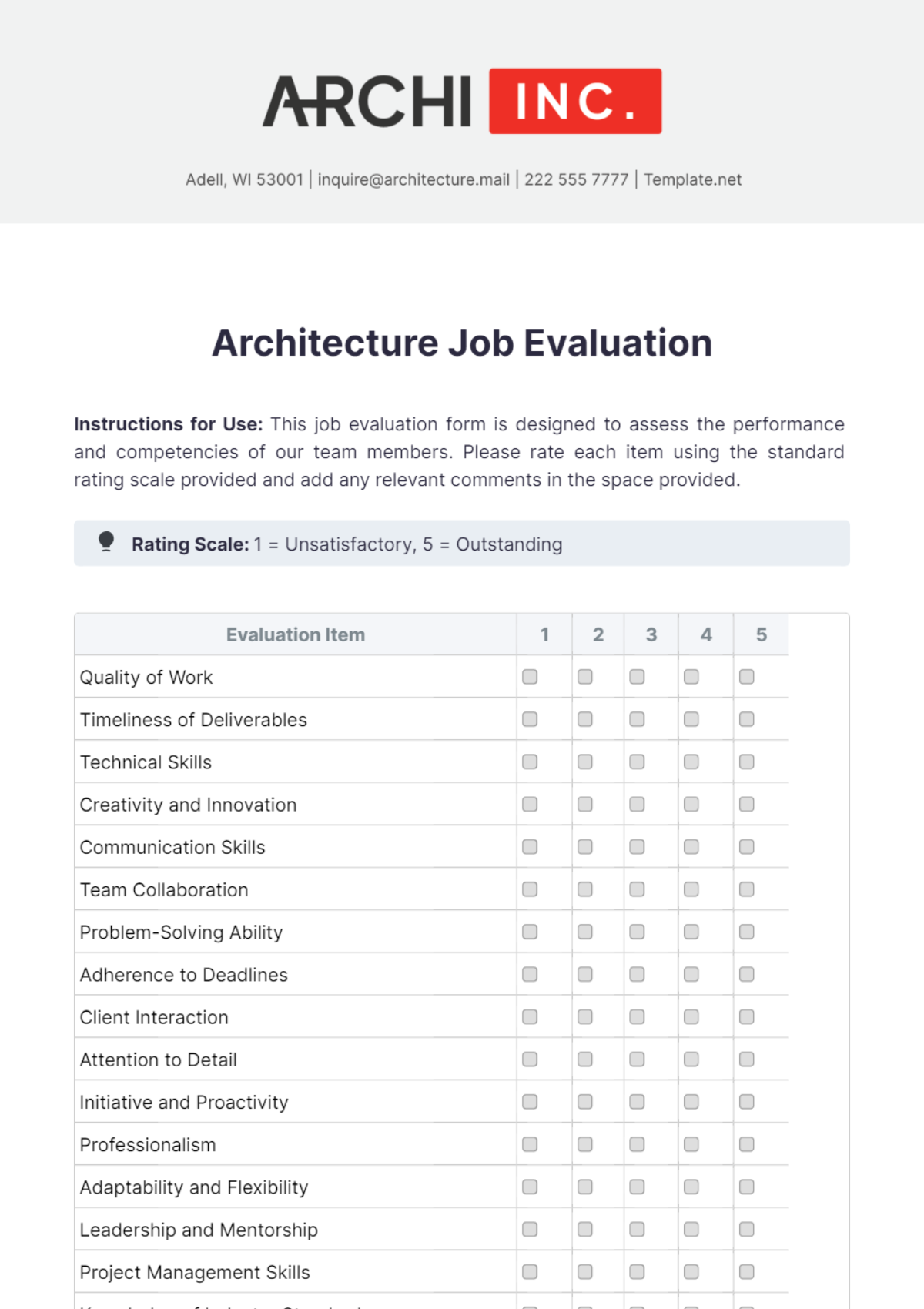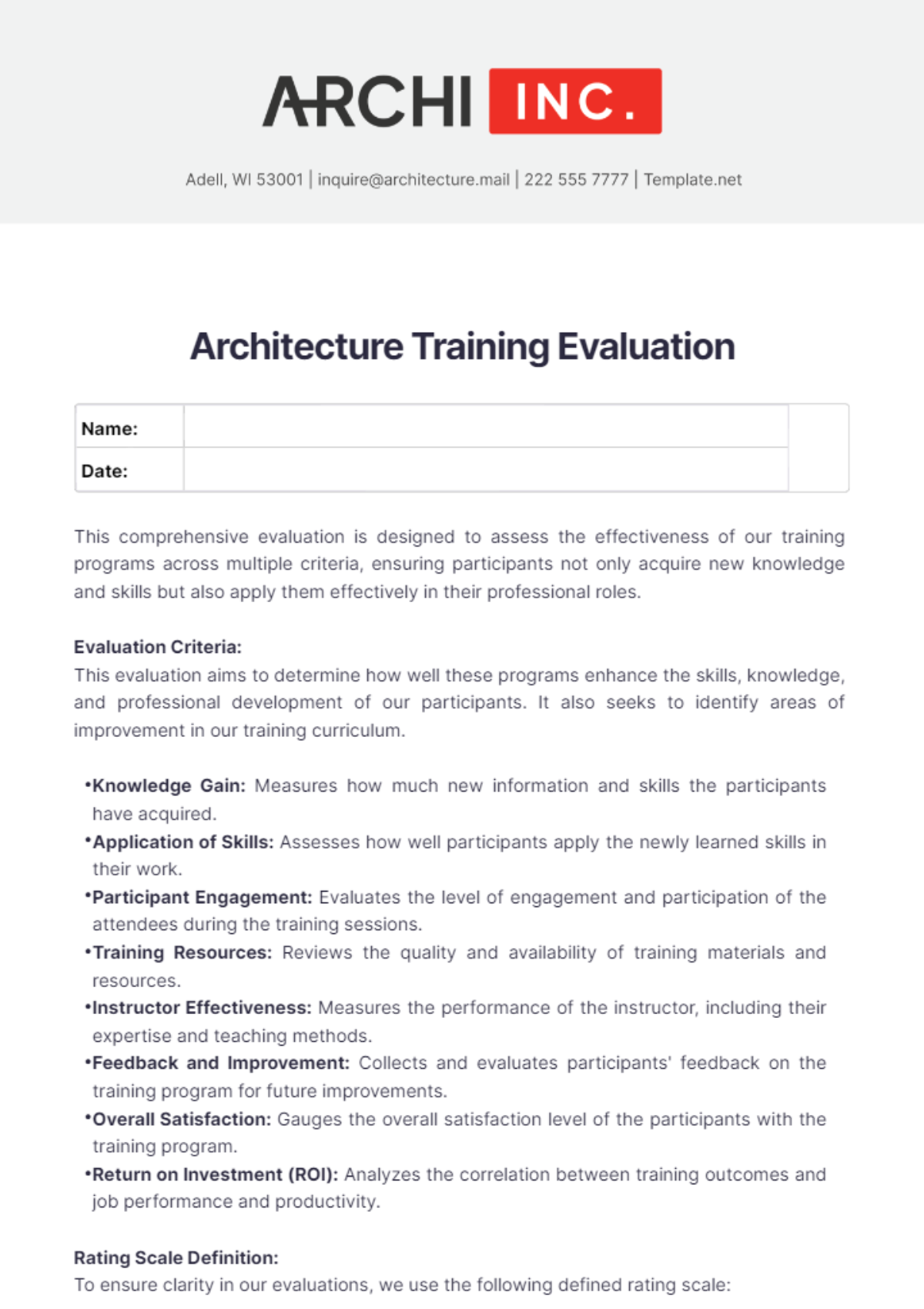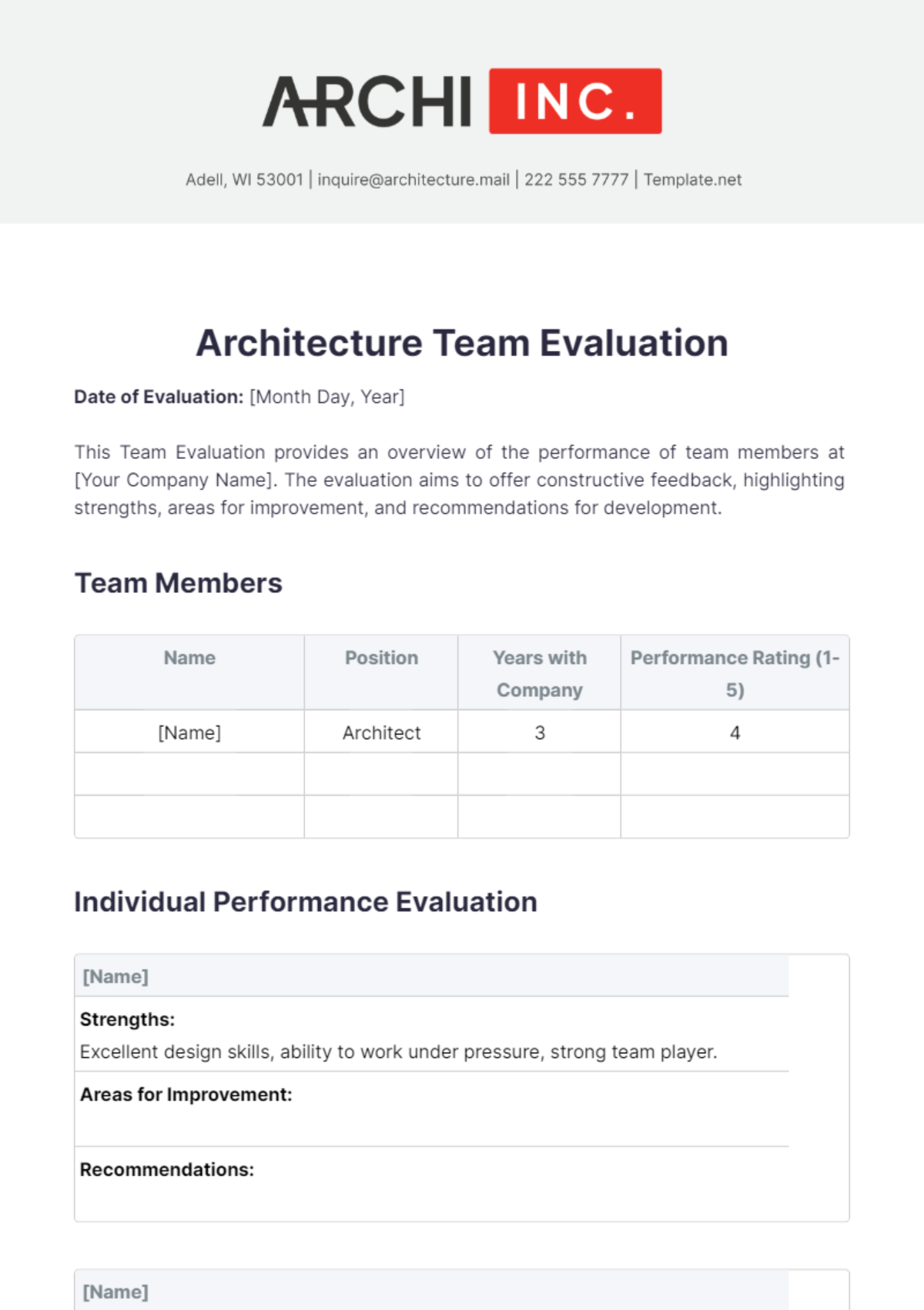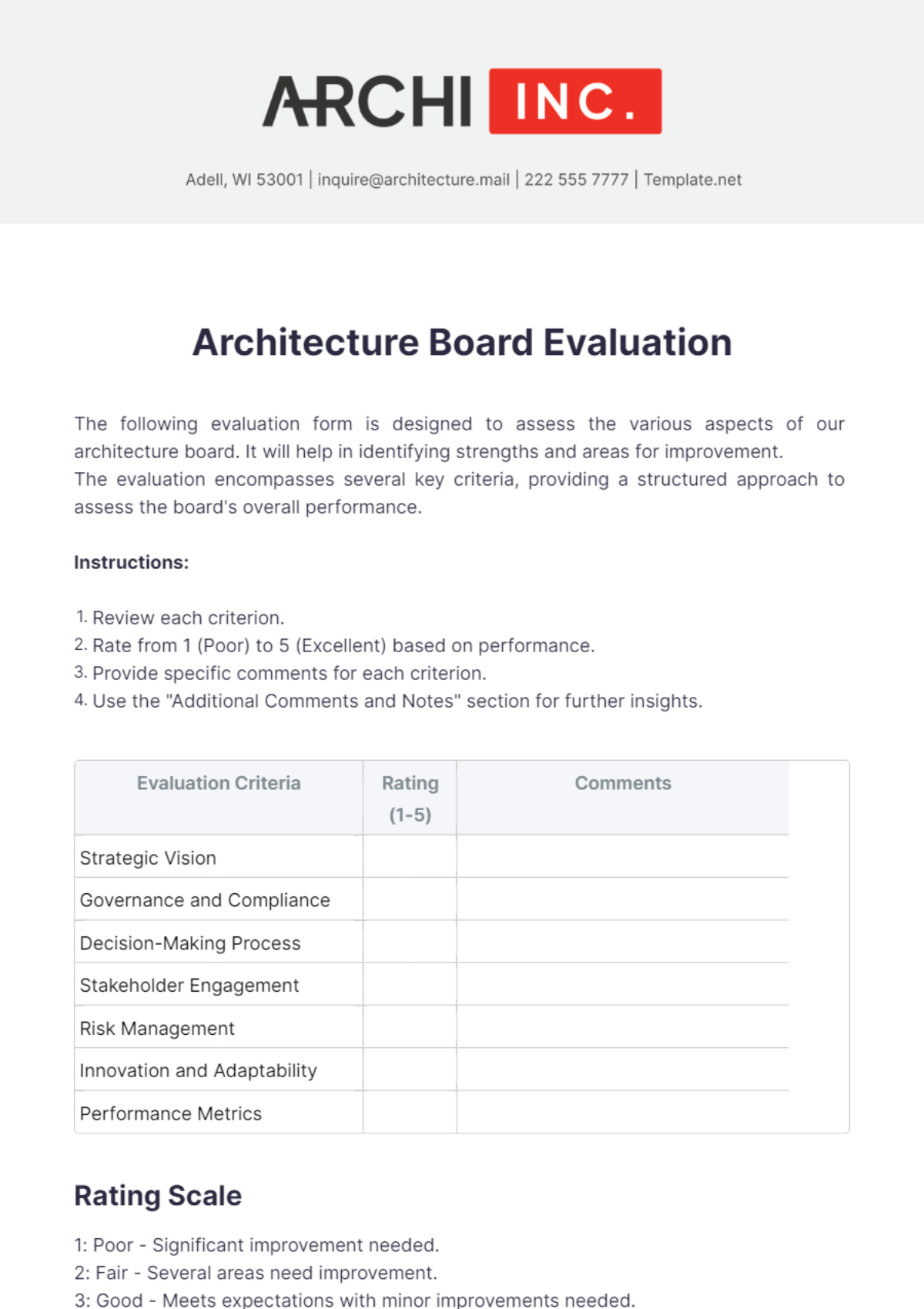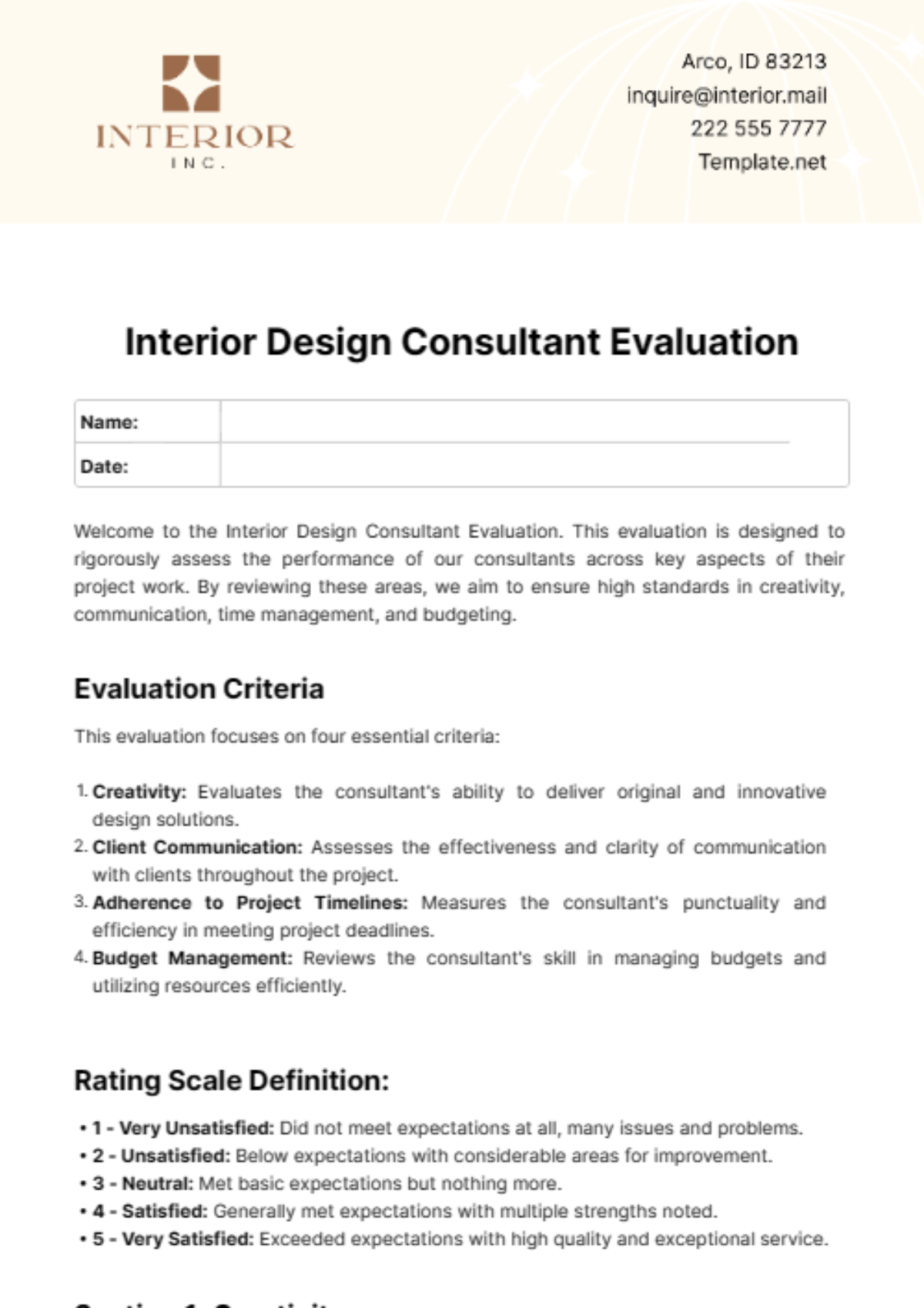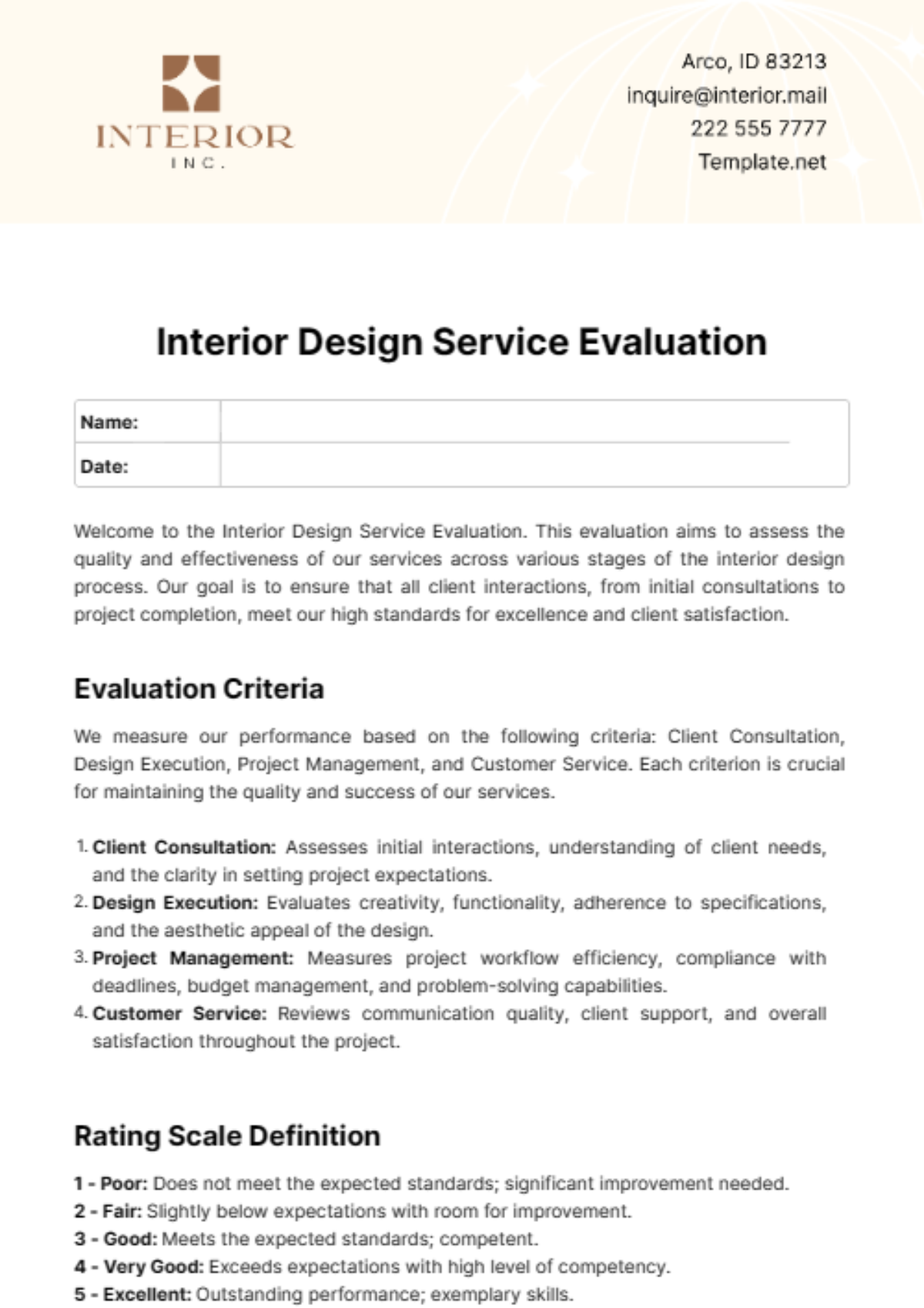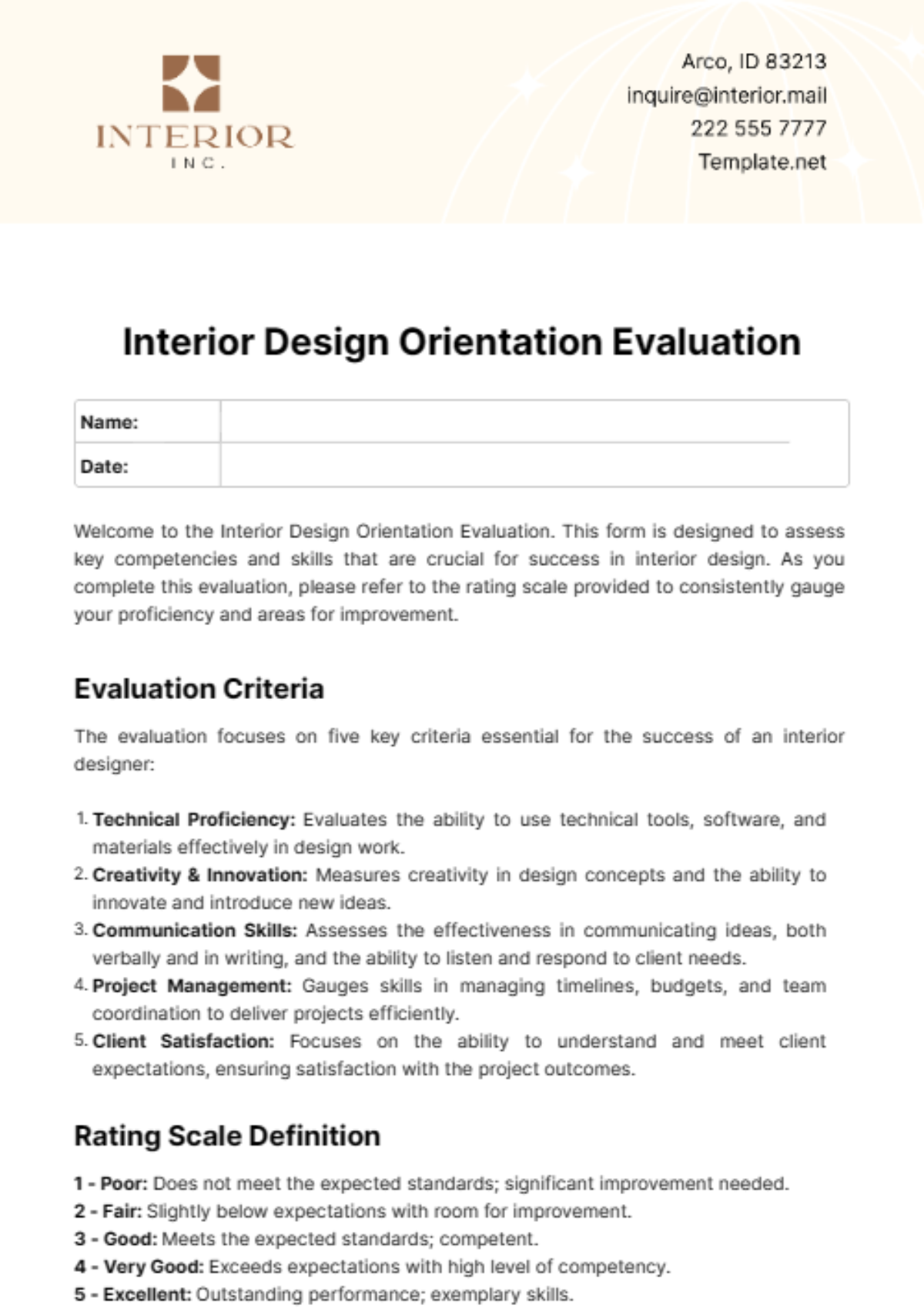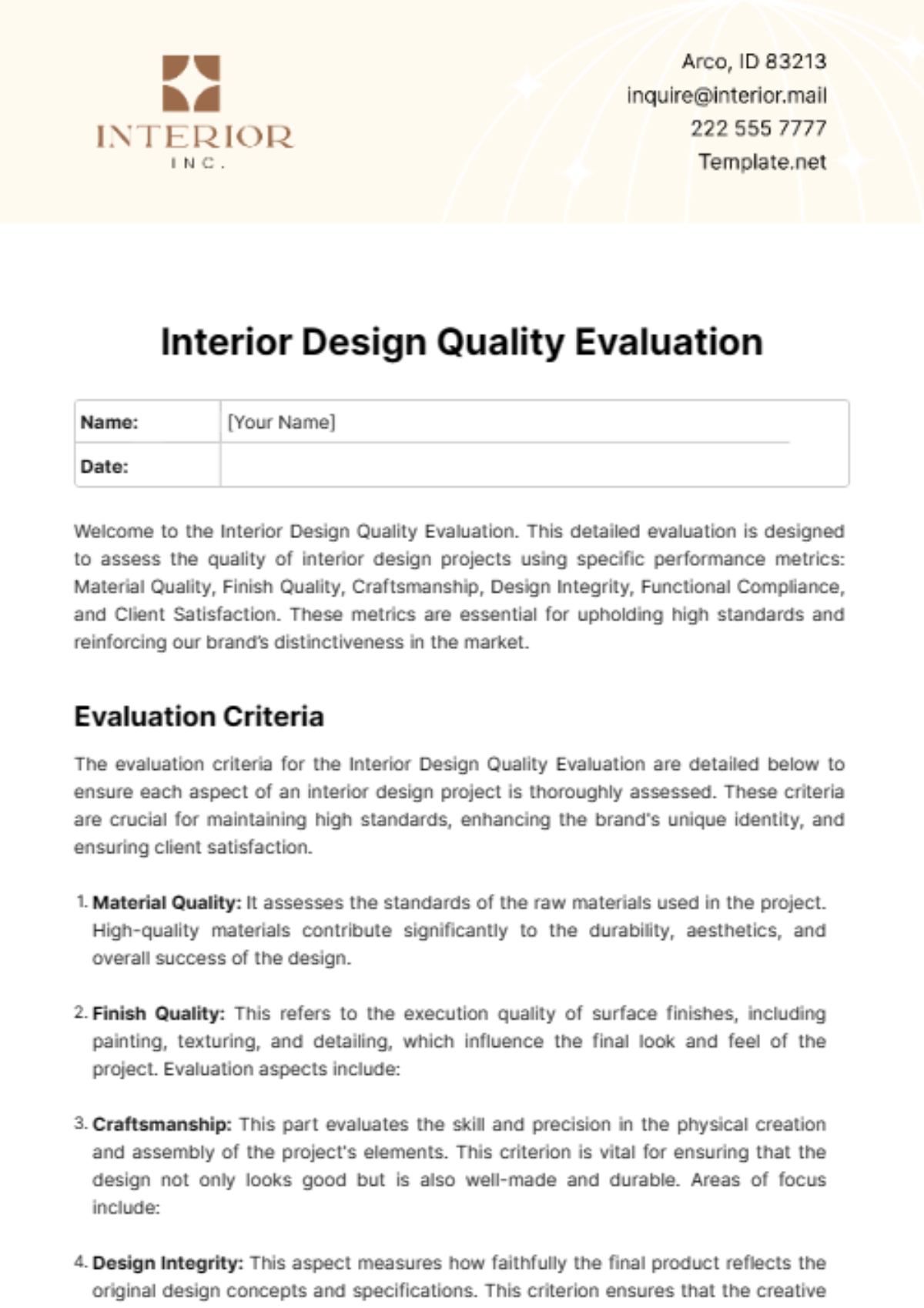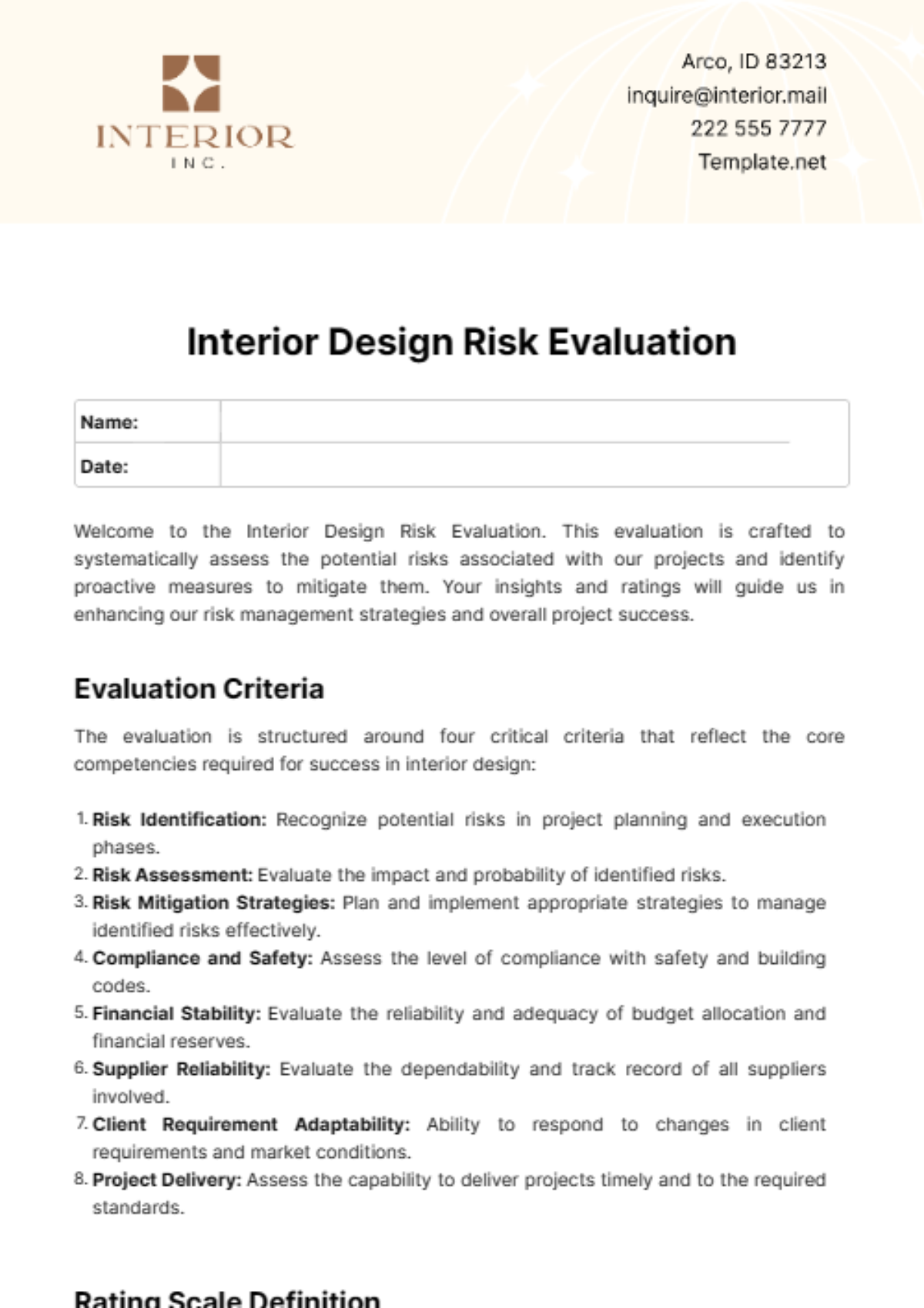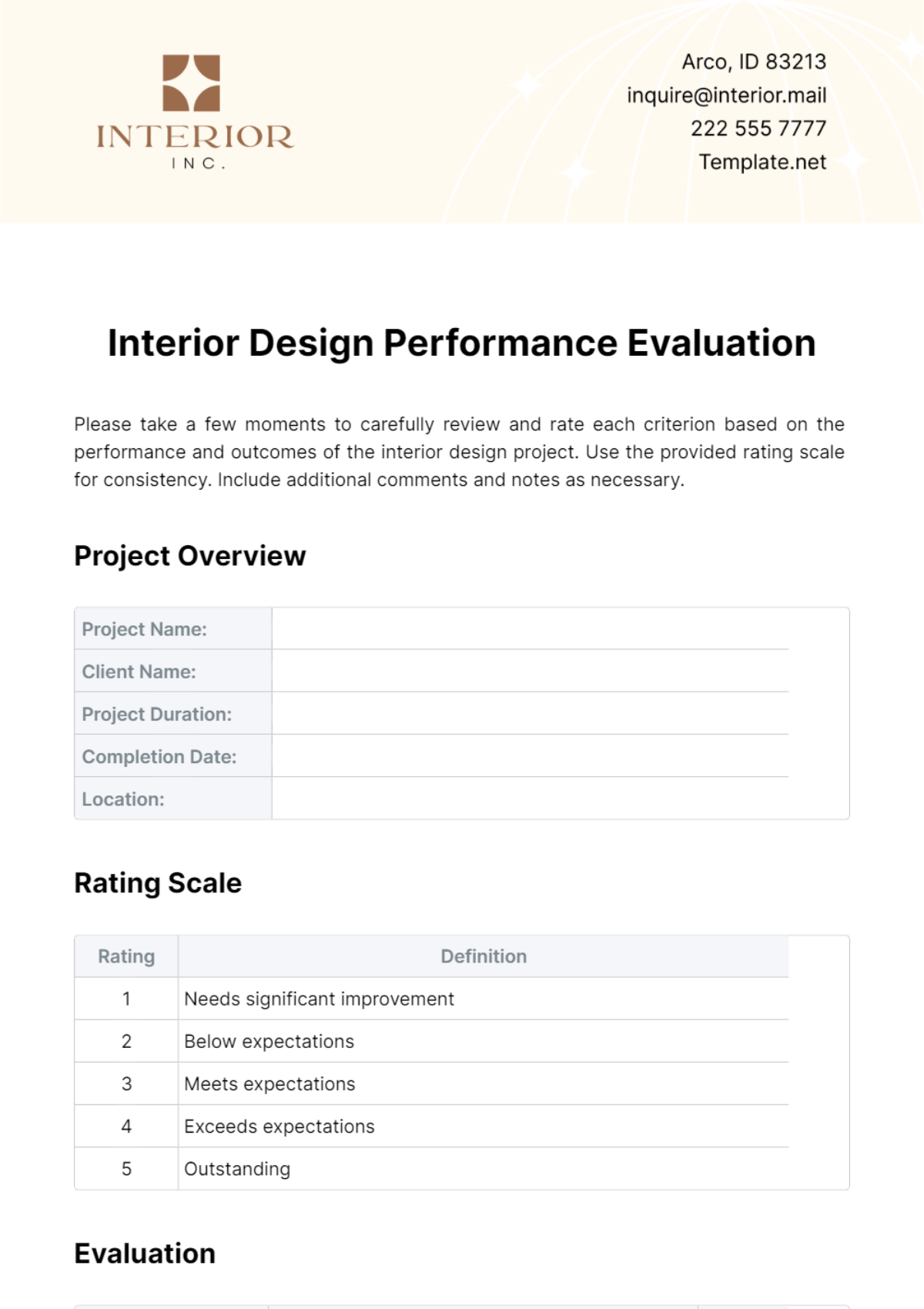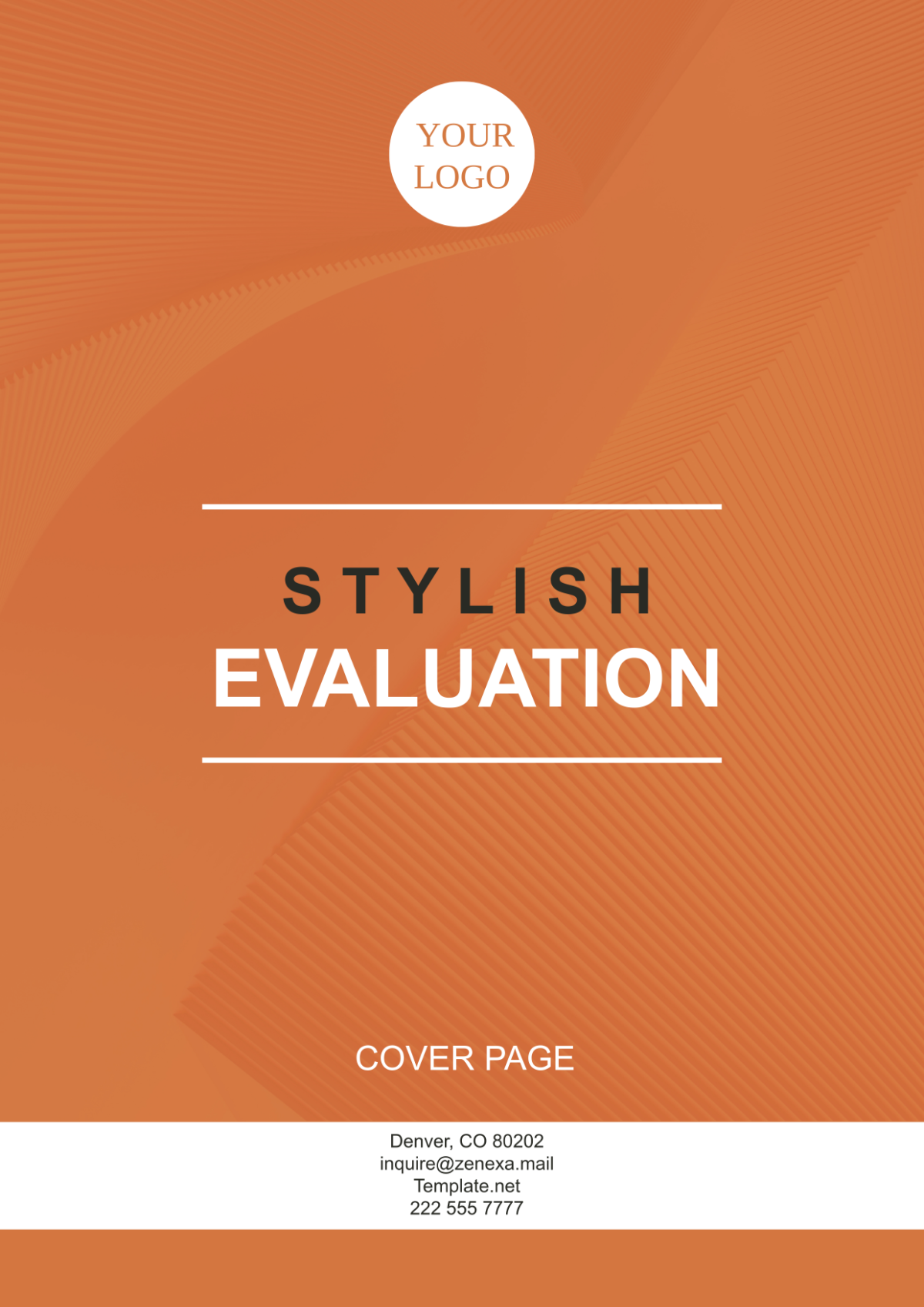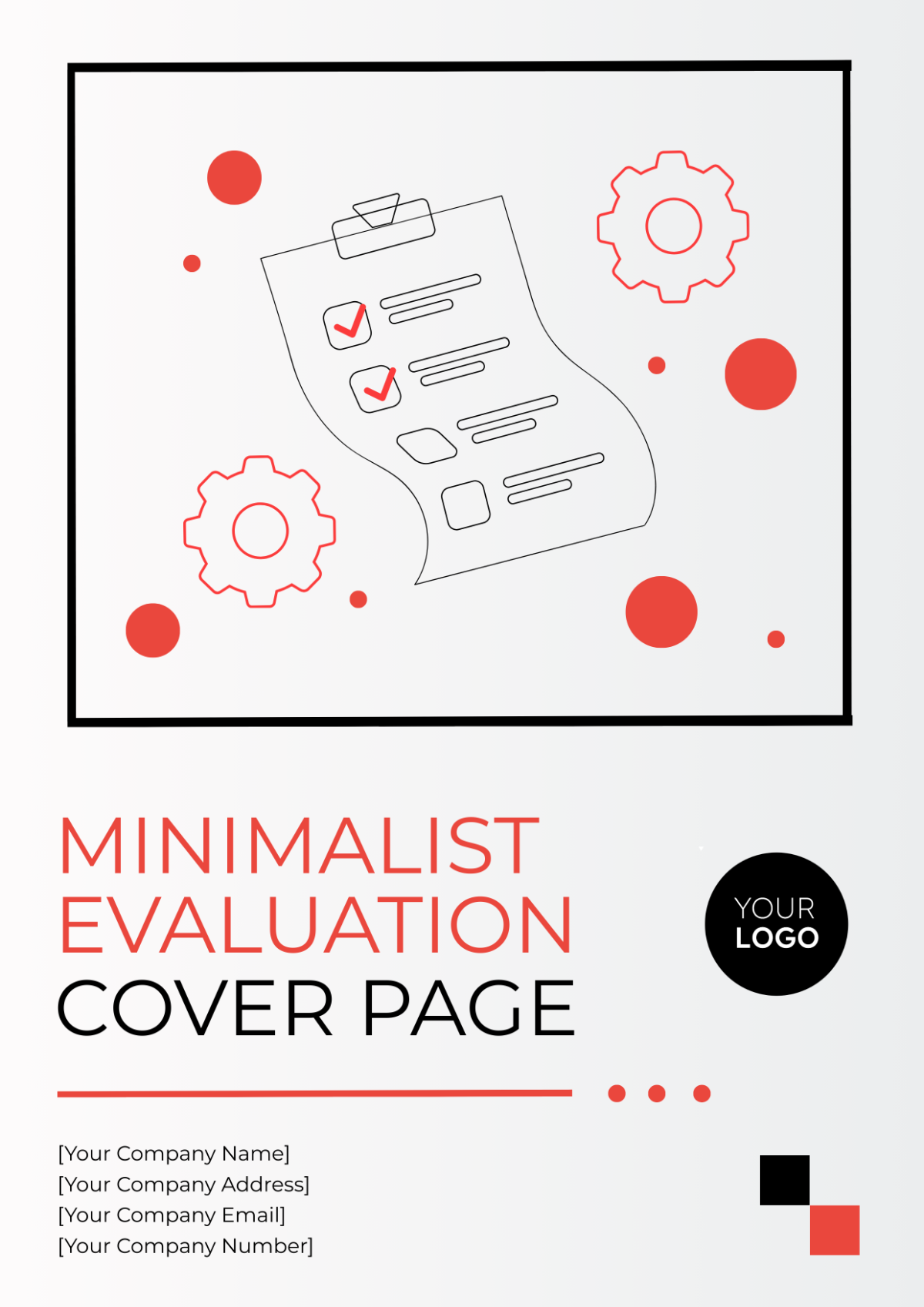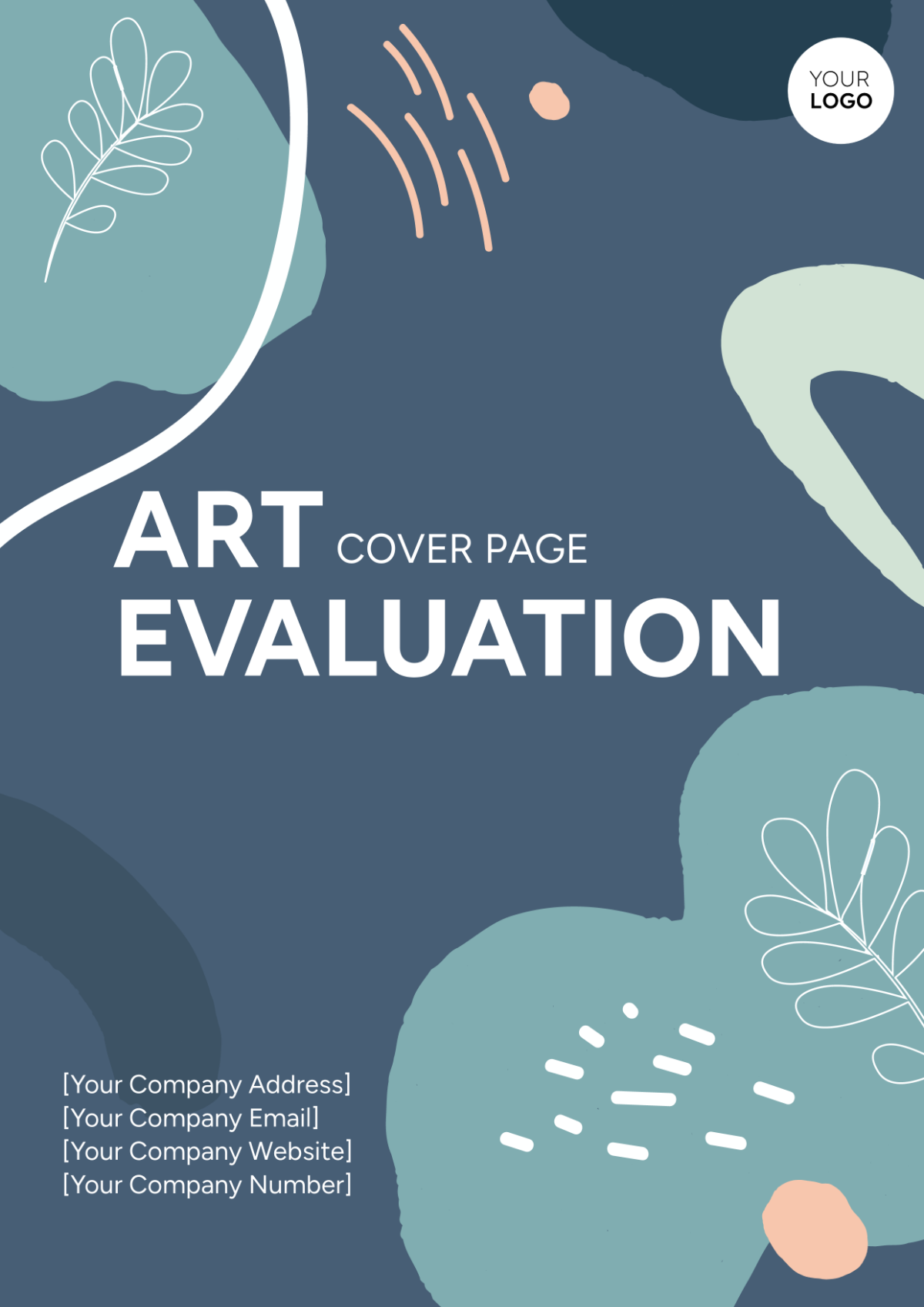Architecture Evaluation Checklist
An Architecture Evaluation Checklist serves as a comprehensive tool to assess the design and effectiveness of architectural solutions. It ensures that architectural decisions align with business objectives, technical requirements, and best practices. This checklist aims to guide stakeholders through the evaluation process, facilitating informed discussions and decisions.
Aspect | Criteria | Yes | No |
|---|---|---|---|
Business Goals Alignment | Does the architecture support [Your Company Name]'s strategic objectives? | ||
Are the business goals clearly defined and mapped to architectural components? | |||
Is there a mechanism in place to measure the alignment of the architecture with evolving business needs? | |||
Functional Requirements | Are all functional requirements adequately addressed by the architecture? | ||
Is there a clear understanding of user needs and how they are fulfilled by the architecture? | |||
Have all relevant stakeholders validated the alignment of functional requirements with the architecture? | |||
Non-Functional Requirements | Have non-functional requirements such as performance, scalability, security, and usability been identified and addressed? | ||
Is there a mechanism to verify compliance with non-functional requirements throughout the development lifecycle? | |||
Are there any trade-offs made to meet conflicting non-functional requirements? | |||
Technical Standards Compliance | Does the architecture adhere to industry-standard technical frameworks and protocols? | ||
Are there any deviations from established technical standards, and if so, are they justified? | |||
Are there mechanisms in place to ensure ongoing compliance with evolving technical standards? | |||
Scalability and Flexibility | Is the architecture designed to accommodate future growth and changing business needs? | ||
Are there provisions for scaling individual components or the entire system horizontally and vertically? | |||
Can the architecture easily integrate with new technologies and adapt to evolving trends? | |||
Performance Optimization | Have potential performance bottlenecks been identified and addressed in the architecture? | ||
Is there a strategy in place for monitoring and optimizing system performance during development and post-deployment? | |||
Have performance benchmarks been established and met during testing? | |||
Resilience and Fault Tolerance | Does the architecture incorporate mechanisms to handle failures gracefully and ensure continuous operation? | ||
Are there redundancy measures in place to mitigate the impact of hardware or software failures? | |||
Has the architecture been tested under various failure scenarios to validate resilience? | |||
Security and Compliance | Are security requirements defined and integrated into the architecture? | ||
Does the architecture implement appropriate measures to safeguard sensitive data and protect against security threats? | |||
Is the architecture compliant with relevant industry regulations and standards (e.g., GDPR, HIPAA, PCI-DSS)? | |||
Documentation and Communication | Is the architecture documentation comprehensive, accurate, and up-to-date? | ||
Are architectural decisions and rationale clearly communicated to relevant stakeholders? | |||
Is there a process for maintaining and disseminating architectural knowledge within the development team? | |||
Cost-effectiveness | Have cost implications been considered in architectural decisions, such as infrastructure requirements and licensing fees? | ||
Is the architecture optimized to deliver maximum value within budget constraints? | |||
Are there strategies in place to monitor and control costs throughout the project lifecycle? |
